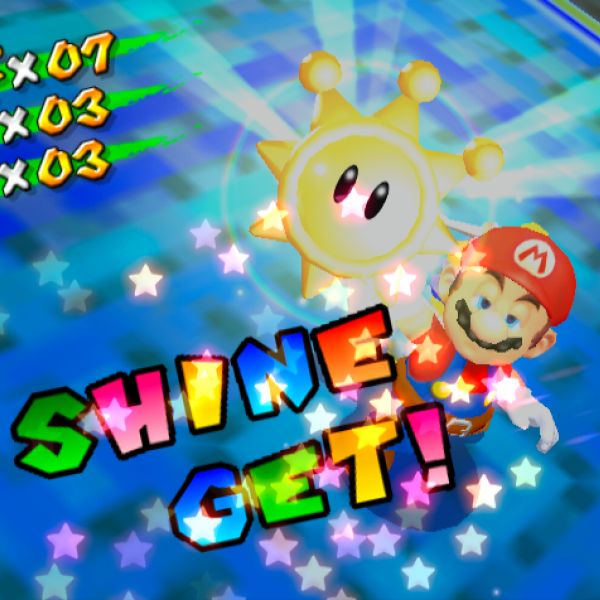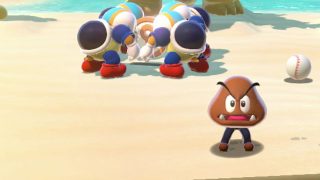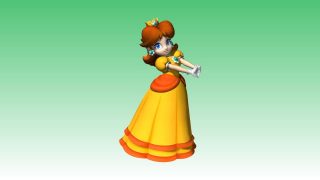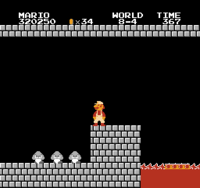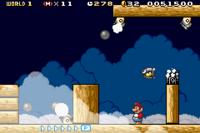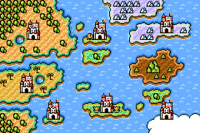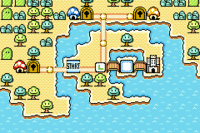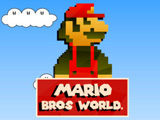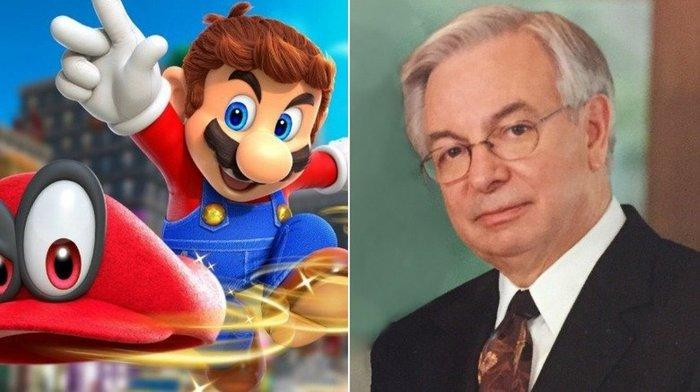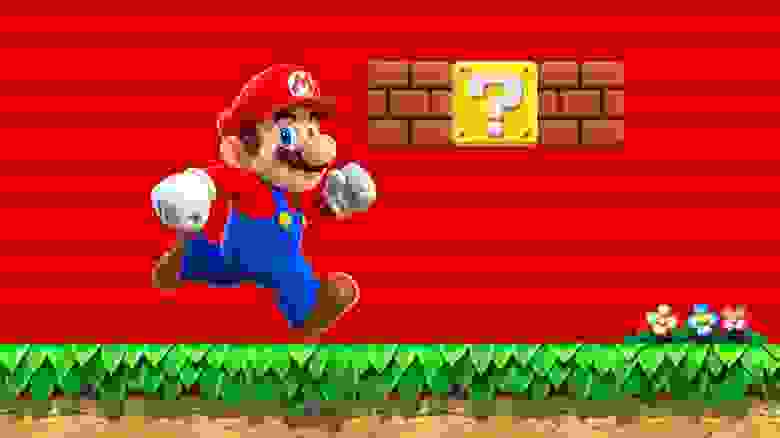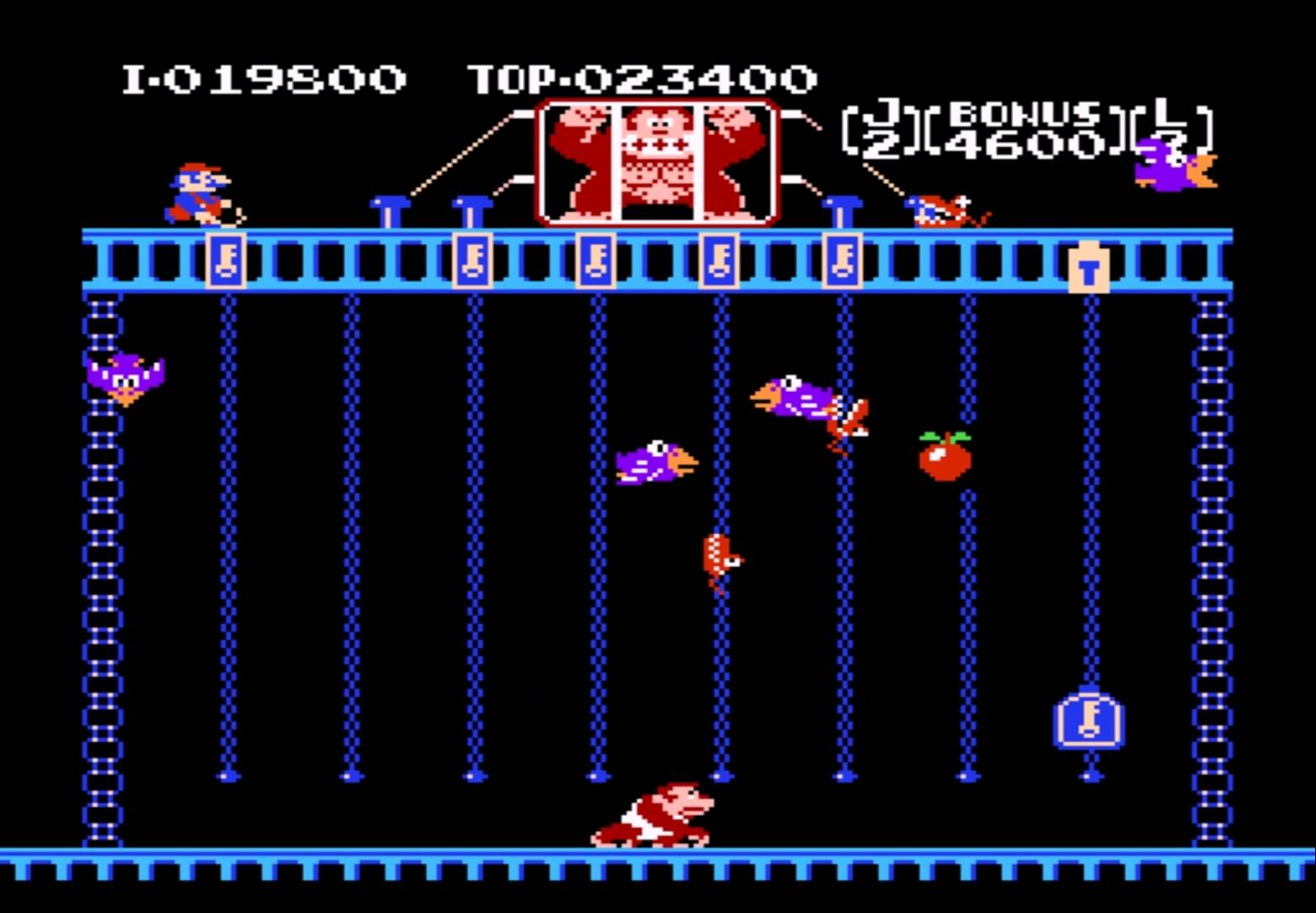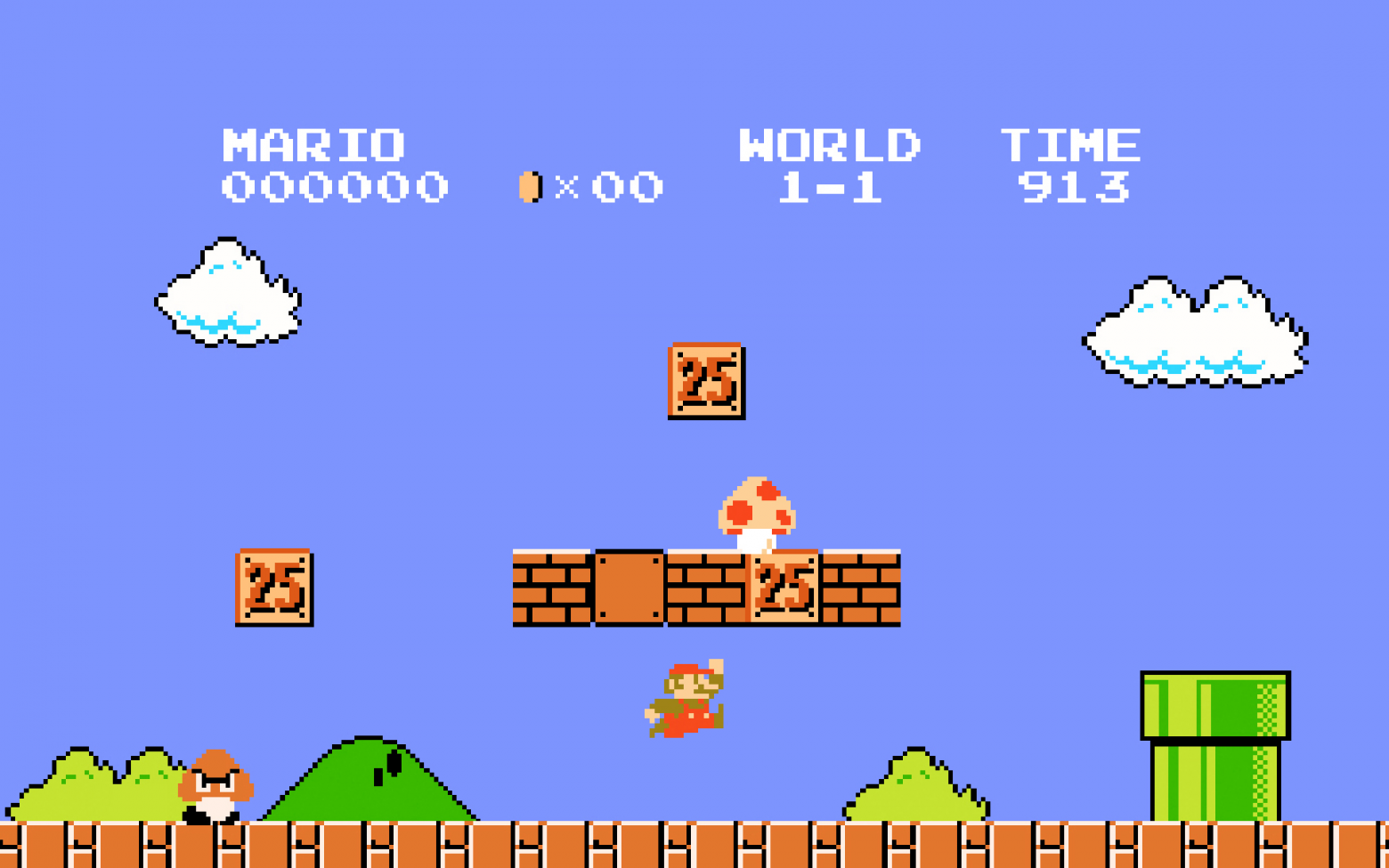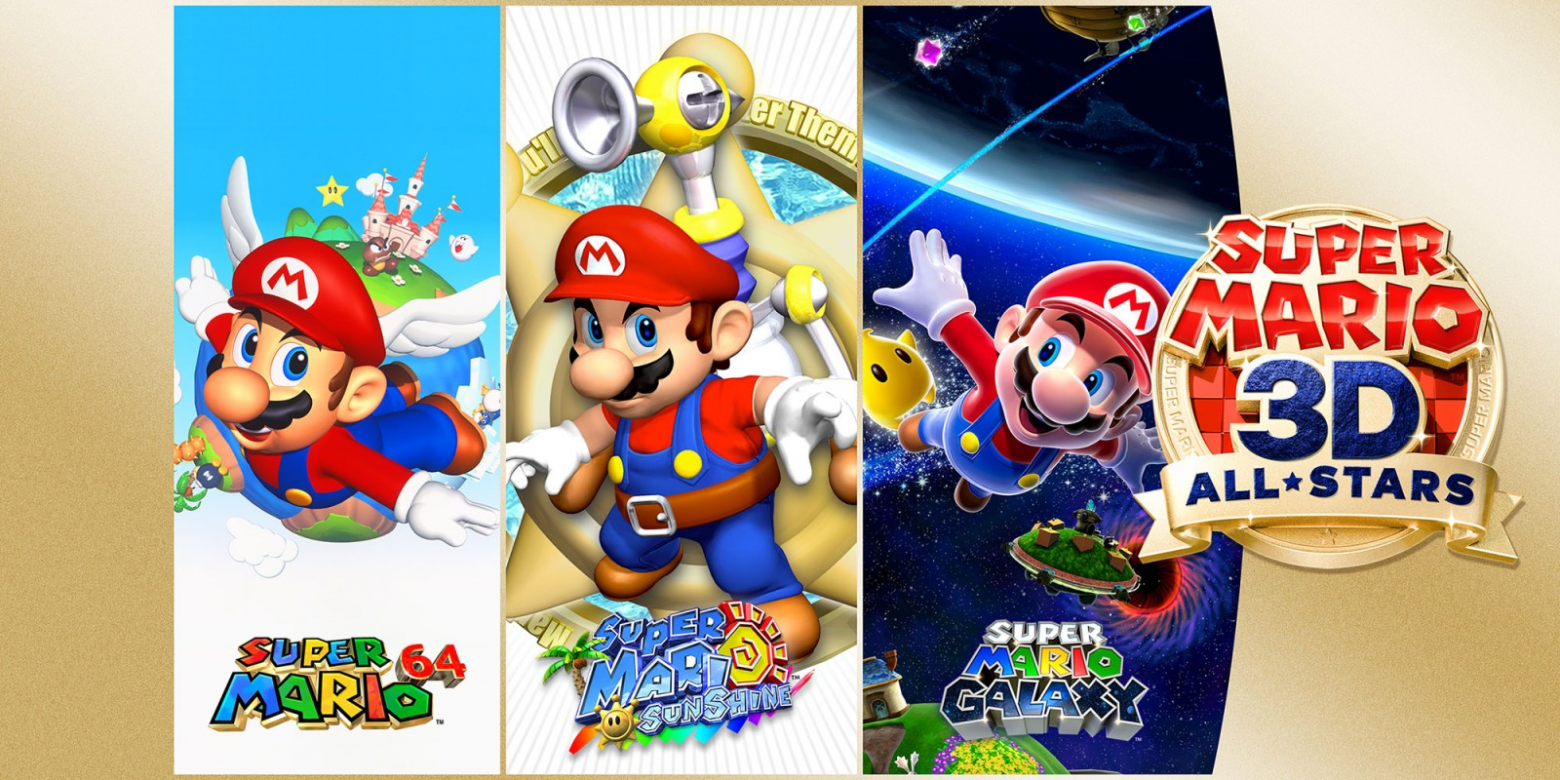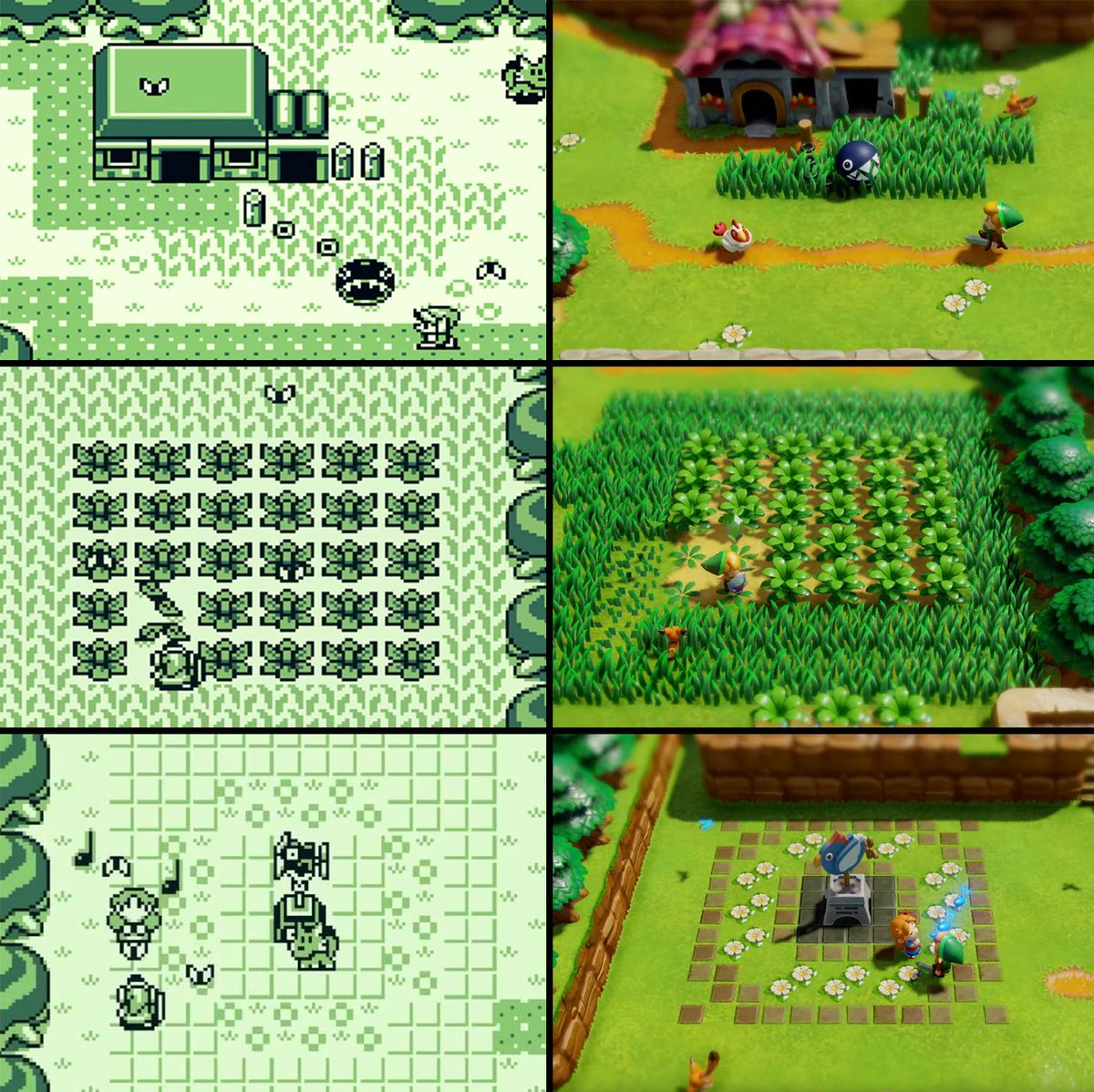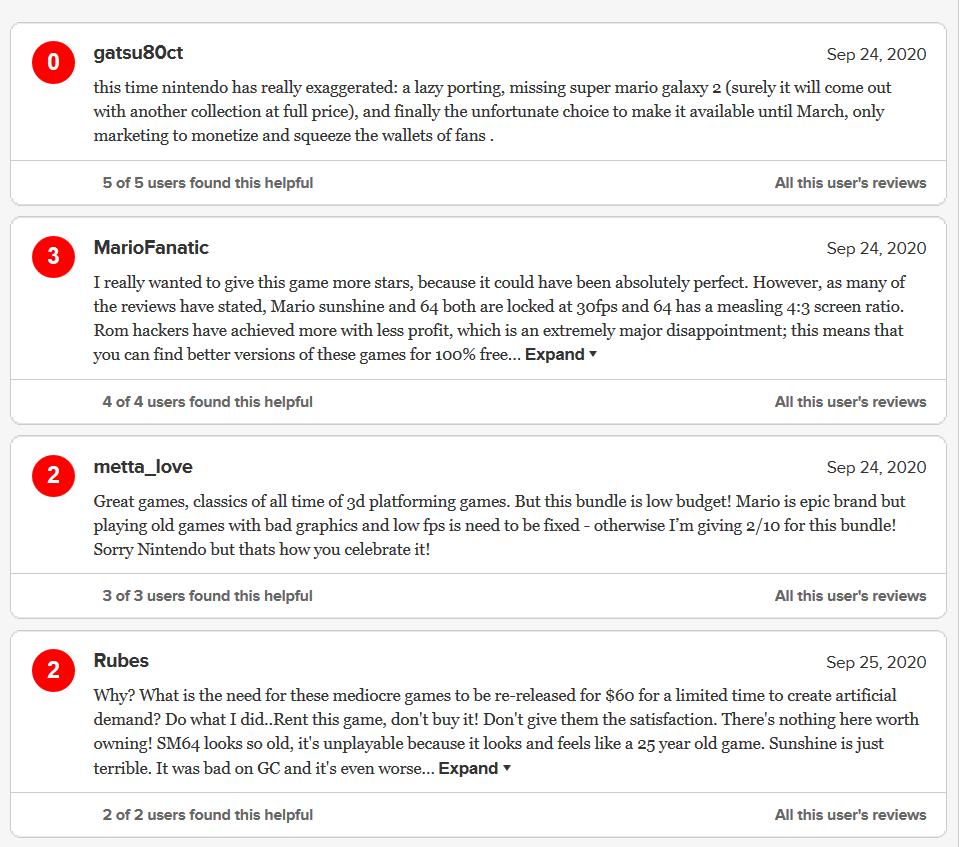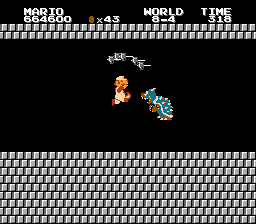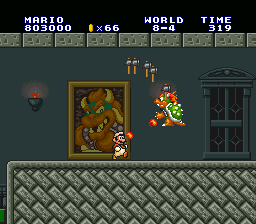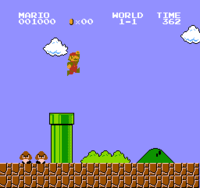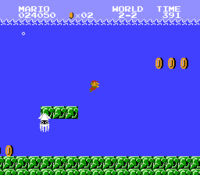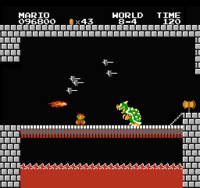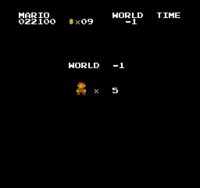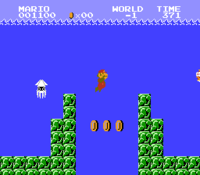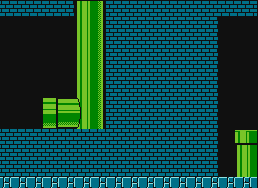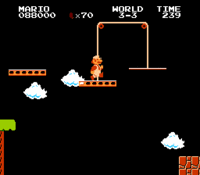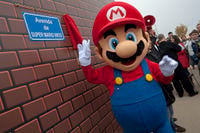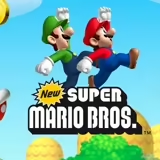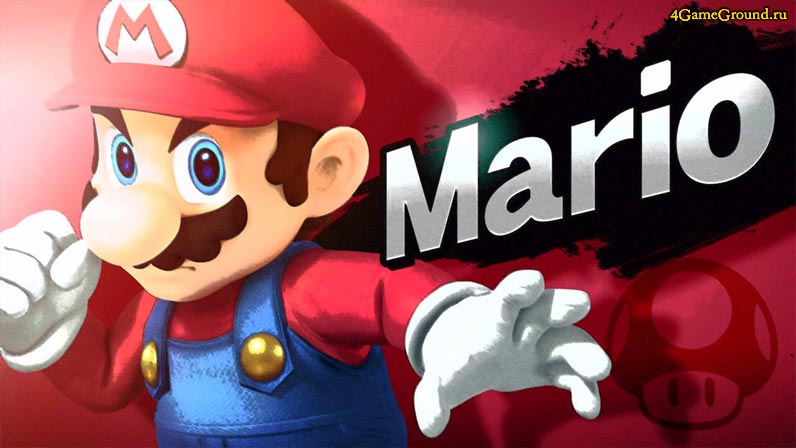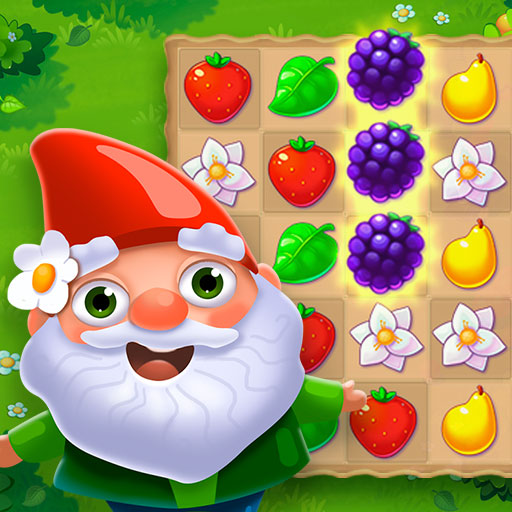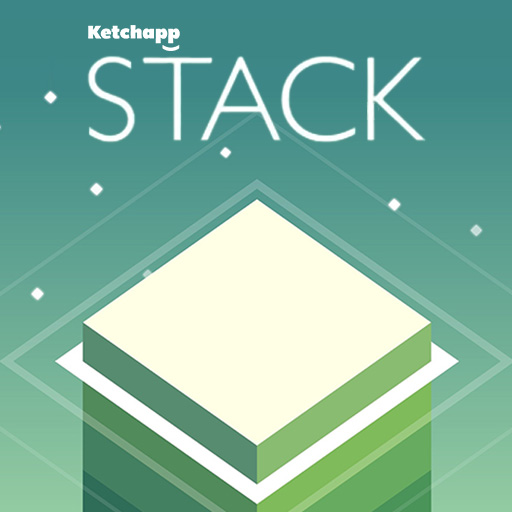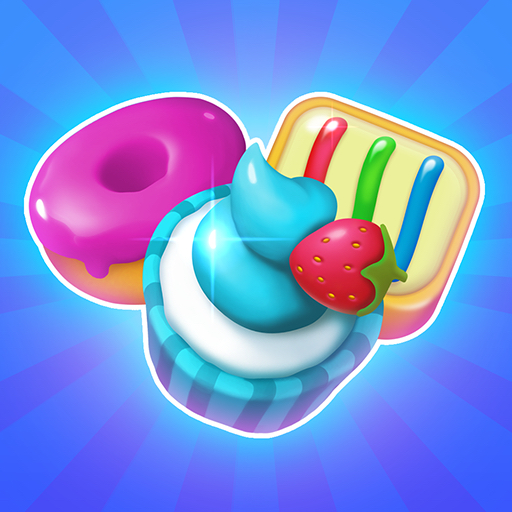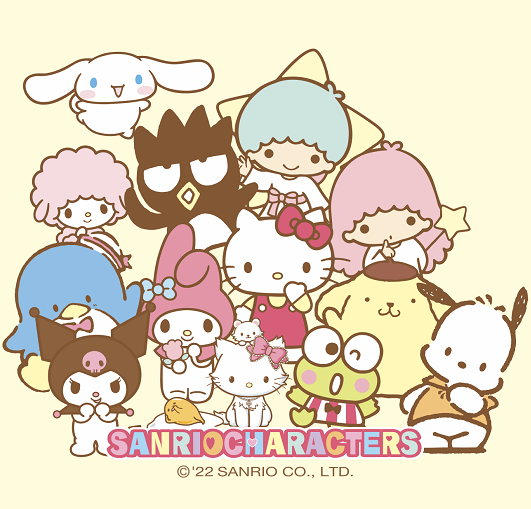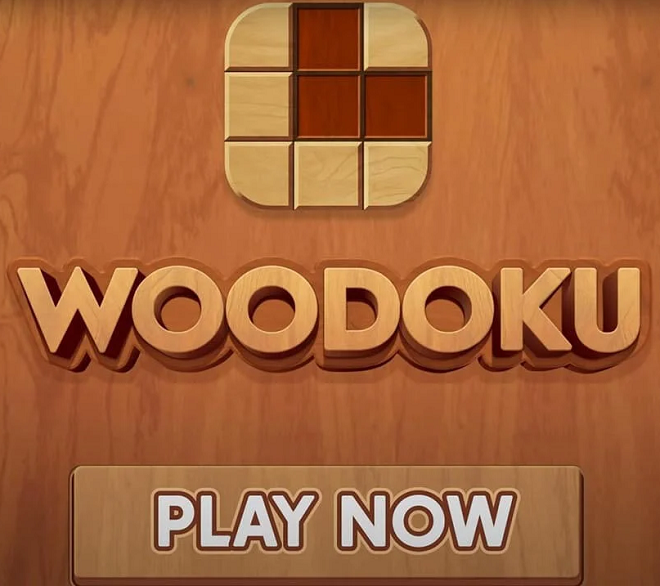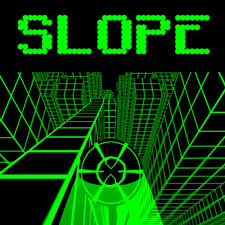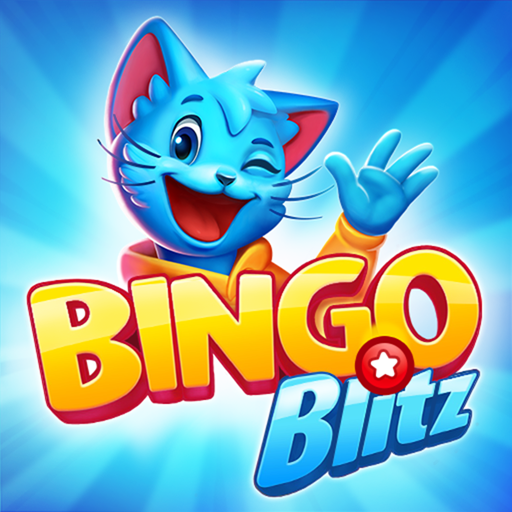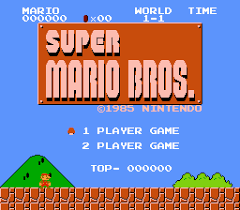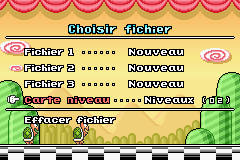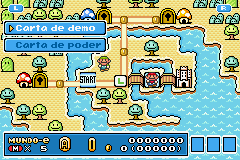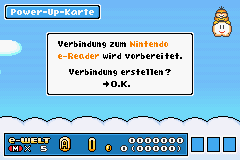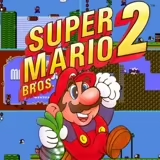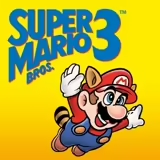Super mario world super mario bros 4
Super mario world super mario bros 4
Why Super Mario Bros. 4 Is Actually Super Mario World
First, here’s a look at the Super Mario World box that was released in North America:
It just says “Super Mario World”. I assume the same holds true for releases in other territories too… except for Japan. Because the Japanese box looks like this:
As you can see, it’s called “Super Mario Bros. 4: Super Mario World”. The Japanese text below it also says “Super Mario World”.
Here’s a look at the cartridge as well:
Again, it’s referred to as Super Mario Bros. 4! In fact, even the guides for the game call it by the full “Super Mario Bros. 4: Super Mario World” name:
So if you’ve ever wanted to play SMB4, you probably already have!
Update about Updates
I’m working on a new book! Site updates will be slower for the next several months while I focus on the book.
In the meantime, check these out:
Support the Site!
This be book bad translation, video games!
Learn all about the history of bad game translation! Shine get!
Other Articles I’ve Written
Do Mario & Friends Wear Goomba Corpses in Super Mario 3D World?
Fans argue about what this Goomba power-up suggests. Luckily, the Japanese devs have an answer.
Was Princess Daisy Originally Princess Toadstool/Peach?
Mario’s first Game Boy release left players with many questions, including one about this damsel in distress.
Why That One Guy in Zelda II Says “I Am Error”
Zelda II features one of the most famous game quotes of all time. But was it a mistranslation? What was it in Japanese?
29 Comments
This makes me wonder why the GBA port of the game was the 2nd Super Mario Advance game. You’d think that they’d keep the numbering consistent; i.e. SMA2 would be SMB2, SMA3 would be SMB3, and SMA4 would be SMW. That would’ve made a lot more sense than SMA1 = SMB2, SMA2 = SMW, and SMA4 = SMB3. What were they thinking?!
What were they thinking calling them Super Mario Advance in the first place?
Super Mario Bros. 4: Super Mario World: Super Mario Advance 2. This is a good title for a video game
Super Mario Bros. 5: Super Mario World 2: Yoshi’s Island: Super Mario Advance 3
Because Super Mario Brothers was already released on the Color as Super Mario Bros DX, and they didn’t want to release it only 2 years after releasing it originally.
It is true that I already knew about it, but that didn’t keep me from enjoying this entry 🙂 The Mario Mania Player’s Guide (which I got when I was 10) features a page showing off a bunch of Mario merchandise. Amongst it all is a jigsaw puzzle with the same logo shown off here, and that’s how I first found out – though I didn’t really realize the whole “SMB 4” business was a Japanese thing at the time, not until I got a little older and recognized the Katakana on the puzzle box as Japanese writing.
So, by that logic, would “Super Mario World 2: Yoshi’s Island” be “Super Mario Bros. 5”?
And the GBA version “Super Mario Advance 3: Super Mario Bros. 5: Super Mario World 2: Yoshi’s Island”?
By that logic, the Wario Land games… AH MY HEAD HURTS
Yup, Wario Land 2 is Super Mario Land 4, Wario Land 3 is Super Mario Land 5, and Wario Land 4 is Super Mario Land 6!
In Japan it was simply called “Yoshi’s Island”
It was called Super Mario World 2 in the US for commercial reasons to get more sales
Super Mario: Yoshi Island is wikipedia clam
DrFurball, Yoshi’s Island wasn’t called Super Mario World 2 anywhere except in non-Japan regions, where it’s called “Super Mario: Yoshi’s Island”. So either Yoshi’s Island is Super Mario World 2, or Super Mario World is Super Mario Bros. 4. You don’t get both. 😉
Correction: “in JAPAN it’s called ‘Super Mario: Yoshi’s Island’”, so if it were a sequel in Japan, you could use that logic, but it’s only called a sequel to SMW elsewhere.
Sorry, you were probably just going for a joke but Mario Title Continuity: Serious Business and all that.
While we’re on the subject of Mario, I’ve just sent Mato screenshots of a glaring error made during the translation of Mario Party Advance, and how it looked in the original Japanese version. I’ve also sent him comparisons of a few other scenes in the game, but I told him they weren’t as important.
Anyway, back to the Super Mario World/Super Mario Bros. 4 business. Here’s an interesting Sears holiday commercial which features an early title screen bearing the “Super Mario Bros. 4”.
This is old. Like, 20 years old.
Just kidding of course! Someone out there will be really pleased. Plus I learned that you like Super Mario World. Which is good because it rules.
Some sources (http://www.mariowiki.com/Yoshi – scroll to the bottom where it says “Names in Other Languages”) report that Yoshi’s intended romanization is “Yossy”. The Japanese version of Yoshi’s Island even has “YOSSY’S ISLAND” in its header.
How did Nintendo of America mess up when translating Super Mario World, and why did it stick throughout the generations? They changed Toadstool’s name to “Peach” by mistake in Yoshi’s Safari (ヨッシーのロードハンティング/Yossy no Road Hunting), then made her new name official in Super Mario 64, so why did they not take any corrective measure for “Yoshi”/”Yossy”?
They changed his name from Yossy to Yoshi in the Japanese games. I don’t know exactly when it happened, but the earliest I can think of is in Mario Kart 64. The Japanese Super Smash Bros. games also spell his name as Yoshi. My guess is that NCL decided to change Yoshi’s official romanization from Yossy to Yoshi since that’s closer to how it’s actually pronounced.
You’ve probably already seen the explanation in a more recent post here. So yeah, it’s supposed to be Yoshi.
I didn’t know about this at all. Judging from the comments, it looks like most people didn’t know. Very interesting to me!
I’ve always thought of Nintendo’s flagship series’ as being region-independent. That’s not to say they aren’t region-checked on their consoles or anything of course, but just that “the Japanese version isn’t the definitive version”. Looking at the comments above about how “Yossy” was changed to the American version, “Yoshi”, I don’t think it was ever a relationship of “leader and follower”, so to speak, but more of a give and take sort of thing.
In fact, the same type of thing happened with the original SNES Panel de Pon. When it was localized, it changed into Tetris Attack with Yoshi as the main character because Americans at the time weren’t exactly into the “magical fairy girls” thing. xD The Yoshi version ended up getting re-translated back into Japanese and was released as “Yoshi no Panepon”.
That poor series… Tetris Attack, Puzzle League, whatever you wanna call it. It had a lot of naming issues. This would be a splendid time to post a link to my Puzzle League fan site. I really shouldn’t. But you can find it if you click on my username. Lol.
Anyway, good read, made me think a lot, obviously. xD Now I feel like working on that website a bit… It needs a lot of work, still.
Super Mario Bros. 4 was on the US title screen at one point during development, and the graphics are left over in the ROM:
You guys forgot to mention that NOA registered the domain “supermario4.com” back in 2012:
It took me this long to realize that you’ve hidden text in your images and now I’m going to be spending hours looking at each article.
Mwahaha! Just consider it New Game+ 😛
To top it all off, the numbering of the “Advance” remakes is all over the place.
So we’ve got Super Mario Advance: Super Mario Bros. 2, Super Mario Advance 2: Super Mario World: Super Mario Bros. 4, Super Mario Advance 3: Super Mario World 2: Yoshi’s Island, and Super Mario Advance 4: Super Mario Bros. 3.
I’m actually curious about something. At any point, could you do a translation of the Japanese Super Mario Bros. 2 (The Lost Levels)? I don’t think I’ve ever read any official translations of what the story is in that game.
Actually, if you had the Nelsonic Super Mario World game watch (used headphones) in 1991, it also says Super Mario Bros 4: Super Mario World on it. They obviously made the watch before Nintendo of America finalized the name by dropping the Super Mario Brothers 4 part. Also, if you look at A Link to the Past, it’s called Legend of Zelda 3: A Link to the Past in Japan, as well as posters from early SNES days that came with the system, they say Zelda 3, so the SNES was initially sequels from the NES- well, in Japan. Nintendo is a Japanese company, so the parent is the one you should go with in names, Nintendo of America is a subsidiary, so don’t go by what they call things.
NOA’s arrogance and idiocracy. The same thinking when changing the Super Famicom body to the more unattractive SNES body. NOA wanted to rebrand Super Mario World as a new game at the time of the SNES launch in August 91 to compete with Sega for what we would later become a console war and their new game Sonic the Hedgehog which was released June/July of 1991. I actually would call Nintendo Customer Support begging them to keep the Super Mario Bros. 4 subtitle. Even at the Tender age of 11, continuity was important to me. Finally they got fed up with me and one operator flatly said, look kid, it’s our game, we can call it what we want!.
The Super Mario Advance series was probably produced in order of demand, or order of desire from Nintendo.
It’s very interesting that the “Super Mario Bros. 4” logo in-game was intended for the later US version, but not in the original Japanese one.
World’s case is special because it actually plays like a “Super Mario Bros. 4”. Maybe you could make case for Yoshi’s Island, but Japan really didn’t; that game became a spinoff. Wario Land, obviously, got spun off into its own series. The three Land games are all pretty weird, and pretty different from each other and from other Mario games.
ALttP was never referred to as any permutation of “Zelda III”; there was a hoax about a “The Legend of Zelda III” prototype, and that’s it.
Actually, NOA did initially have every intention of translating Zelda no Densetsu: Triforce of the Gods simply to Zelda III. It is stated on early posters packaged with the SNES from August to December of 1991, all of the operators at Nintendo Customer Support confirmed the title Zelda III at the time as well. A SNES poster of future SNES games in volume 26 of Nintendo Power included the Zelda III title. The title Zelda 3: A Link To the Past was used in and on the cover of the EGM December 1991 issue. The Game was not officially changed into The Legend of Zelda A Link To The Past until January 1992. The real question is what would have happened with the time line if NOA decided to stick with the Zelda III title. Would they have inserted the comic book storyline running in Nintendo Power shortly after the release of A Link To The Past or simply changed the numbers by regions like Square did with Final Fantasy?
World 4-4 (Super Mario Bros.)
| Level | |
|---|---|
| World 4-4 | |
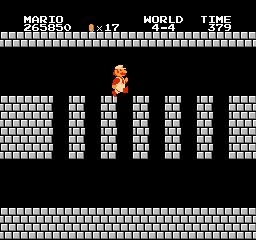 | |
| Level code | World 4-4 |
| World | World 4 |
| Game | Super Mario Bros. |
| Time limit | 400 seconds |
| Boss | Fake Bowser (Spiny) |
| Directory of levels >> | |
World 4-4 is the fourth and final level of World 4 in Super Mario Bros. and the sixteenth level overall in said game.
Contents
Layout [ edit ]
The player starts at the top of stairs that end at lava pits. Ahead are two paths, and the player must chose the correct path in order to move forward; taking the top path will bring the player to the next hall, whereas taking the bottom path will bring the player back to the start of this puzzle. (In Super Mario All-Stars and Super Mario Bros. Deluxe, a chime indicating whether the player took the right or wrong path will sound.) In the next hall, the player has to jump up a set of platforms to reach the next puzzle, split between three paths. Taking the bottom path will lead to the fake Bowser, whereas taking either of the other two paths will bring the player back to the lava pits at the start of this hall. While moving along either of the paths, the fake Bowser will begin breathing fire at the player. The bridge the fake Bowser is on has a Fire-Bar placed on it and a Podoboo jumping up from underneath.
Super Mario Bros. Deluxe challenges [ edit ]
In Super Mario Bros. Deluxe, the player can collect five Red Coins, find a hidden Yoshi Egg, and get a medal based on their score. The Yoshi Egg is found in a Hidden Block directly to the left of the single block before the second puzzle, and the score to beat is 17000 (14000 in the Japanese version [1] ). The Red Coin locations are:
World 4 (New Super Mario Bros. 2)
World 4 is the fourth normal world appearing in New Super Mario Bros. 2. It is a snow-based world, and the levels are made up of snow or ice. The map music is the same one which was used in World 3 of New Super Mario Bros. Wii. This world is unlocked when a player completes World 3-Castle. This is also an optional world as the player can choose to go to World Flower instead.
There are twelve levels and five Toad Houses in this world, making it the longest world in New Super Mario Bros. 2 (World 3 has the same amount of levels, but two less Toad Houses). This world has a total of fourteen exits. Of the twelve levels, eight levels are on the main path, which includes five normal levels, a Ghost House, and the Fortress and Castle. Of the remaining four levels, one is the Rainbow Course, one is a level requiring payment of Star Coins and the other two are secret levels. Of the five Toad Houses, two are red, two are green and one is yellow. The boss of this world is Morton Koopa Jr., who is fought at the castle level.
World 8-4 (Super Mario Bros.)
| Level | |
|---|---|
| World 8-4 | |
 | |
| Level code | World 8-4 |
| World | World 8 |
| Game | Super Mario Bros. |
| Time limit | 400 seconds |
| Boss | Bowser |
| Directory of levels >> | |
World 8-4 is the fourth and final level of World 8 in Super Mario Bros., as well as the thirty-second and final level in the game overall.
Contents
Layout [ edit ]
The final castle level consists of several Warp Pipes leading between rooms. One pipe in each area takes the player either to the next room or back to the start. If the player does not take the pipe, the room will loop around.
In the first area, the first Warp Pipe the player comes to is the pipe the player will exit from if they take the wrong ones up ahead. The next pipe will lead back to the start, and the pipe after that across a lava gap with a lift will lead to the next area. In the second area, the second pipe from the one the player exited from leads back to the start. The floating pipe up ahead leads to the next area, a Hidden Block is placed to the left of the pipe that acts as a platform to reach the pipe. In the third area, Cheep-cheeps will start jumping up from below. The second pipe from the one the player exited from leads back to the start. The pipe immediately after across a lava gap will lead to an underwater area with Fire-Bars and Bloobers. The pipe at the end of the underwater area leads to the final room, with the only other pipe leading back to the start. After a Hammer Brother followed by a Podoboo, the player will face Bowser, who throws hammers and breathes fire at the player character. Defeating him or touching the axe to destroy the bridge will allow the player to rescue the princess and complete the game.
Super Mario Bros. Deluxe challenges [ edit ]
In Super Mario Bros. Deluxe, the player can collect five Red Coins, find a hidden Yoshi Egg, and get a medal based on their score. The Yoshi Egg is found in a Hidden Block directly above the pipe the player exits from in the underwater area, and the score to beat is 18000. The Red Coin locations are:
World 7-4 (Super Mario Bros.)
| Level | |
|---|---|
| World 7-4 | |
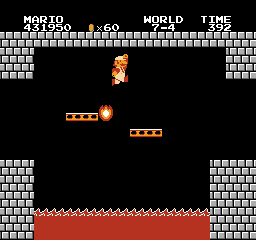 | |
| Level code | World 7-4 |
| World | World 7 |
| Game | Super Mario Bros. |
| Time limit | 400 seconds |
| Boss | Fake Bowser (Hammer Brother) |
| Directory of levels >> | |
World 7-4 is the fourth and final level of World 7 in Super Mario Bros. and the twenty-eighth level overall in said game.
Contents
Layout [ edit ]
Like with World 4-4, World 7-4 consists of puzzles where the player must choose the correct path in order to move forward. In VS. Super Mario Bros. and All Night Nippon Super Mario Bros., this maze has different solutions. In Super Mario All-Stars, if the correct path is chosen, a chime sounds; if it is incorrect, a buzzer sounds. Before the first puzzle are two lifts that fall under the player’s weight, with a Podoboo between them jumping out from the lava below. In order to move through the first puzzle, the player has to take the bottom path, followed by the middle path, and then the top path; taking any other path will bring the player back to the start of this puzzle. For the second puzzle, the player must take the top path with the Fire-Bar, followed by remaining in the middle path while jumping over the gaps, and then taking the top path once more; taking any other path will bring the player back to the start of this puzzle. After completing the second puzzle, the player will then have to dodge the fake Bowser’s fire breath as they move forward, jumping between the gaps. The fake Bowser up ahead will throw hammers and a Podoboo will be jumping up from underneath.
In VS. Super Mario Bros. the solution to the first puzzle is more complicated: the player must take the bottom path, followed by the top path, but must drop down to the middle path where the platform for the top path ends, and then must jump back up and take the top path for the final section. For the second puzzle the player must take the bottom path, then the top path, and finally the bottom path again.
Super Mario Bros. Deluxe challenges [ edit ]
In Super Mario Bros. Deluxe, the player can collect five Red Coins, find a hidden Yoshi Egg, and get a medal based on their score. The Yoshi Egg is found in a Hidden Block directly to the right of the first large stone platform, and the score to beat is 16000. The Red Coin locations are:
World 4-2 (Super Mario Bros.)
| Level | |
|---|---|
| World 4-2 | |
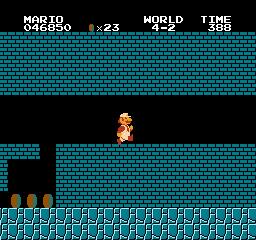 | |
| Level code | World 4-2 |
| World | World 4 |
| Game | Super Mario Bros. |
| Time limit | 400 seconds |
| Directory of levels >> >> >> >> >> | |
World 4-2 is the second level of World 4 in Super Mario Bros. and the fourteenth level overall in said game, taking place underground. If the player is not playing on Hard Mode, this level introduces the Buzzy Beetle enemy into the series. Because the Warp Zone after the main exit has only the middle pipe, the Minus World cannot be entered from this level’s Warp Zone.
Contents
Layout [ edit ]
Super Mario Bros. Deluxe challenges [ edit ]
In Super Mario Bros. Deluxe, the player can collect five Red Coins, find a hidden Yoshi Egg, and get a medal based on their score. The Yoshi Egg is found in a Hidden Block to the left of the pipe before the one leading to the end of the level, and the score to beat is 33000 (29000 in the Japanese version [1] ). The Red Coin locations are:
The Warp Zones are also changed and contain Warp Pipes that lead directly to the end of the level.
Super Mario Advance 4: Super Mario Bros. 3
Super Mario Advance 4: Super Mario Bros. 3 is the Game Boy Advance remake of the 1988 NES game Super Mario Bros. 3, and is the fourth and final entry in the Super Mario Advance series of games on the GBA. It boasts similar graphics and sound to the Super Mario All-Stars version, and makes use of the e-Reader to support additional content. It features a remake of Mario Bros. identical to that found in the Super Mario Advance games that came before it. It also has rumble support if played on a Game Boy Player.
The first release of the game was bundled with a few e-Reader cards. Two groups of cards, referred to as series, were also sold as separate products. By scanning these special cards into the e-Reader, players are able to unlock items, videos and, most significantly, new levels in the game. One notable item is the Cape Feather from Super Mario World, which allows Mario to transform into Caped Mario. Included with the game were also two Switch cards that the player could activate and deactivate the effects of by scanning them: the Orange Switch and the Blue Green Switch. The e-Reader feature is still present in the European version, but is disabled and inaccessible, despite being fully translated. This is due to the e-Reader not releasing in Europe, despite being planned to. The e-reader’s functionality can be forcibly accessed in the European version by corrupting a save file. [4]
The game was re-released on the Wii U’s Virtual Console service in Japan on December 29, 2015, [2] and later in North America on January 21, 2016, in Europe on March 10, 2016, and in Australia on March 11, 2016. All releases on the Wii U automatically include all levels that were accessible via e-Reader cards, including levels that had previously only been released in Japan.
Contents
Story [ edit ]
The story, from the instruction booklet:
The Mushroom Kingdom has remained a peaceful place, thanks to the brave deeds of Mario and Luigi. However, the Mushroom Kingdom forms an entrance to the Mushroom World, a place where all is not well. Bowser sent his seven children to make mischief in this normally peaceful land. As their first order of business, they stole the royal magic wands from each country in the Mushroom World and used them to turn the kings into animals. Mario and Luigi must recover the royal magic wands from Bowser’s seven kids to return the kings to their true forms. As Mario and Luigi set off on their journey deep into the Mushroom World, Princess Peach and Toad have but one thing to say: “Good-bye, and good luck!”
Controls [ edit ]
List of changes [ edit ]
There are many changes between the original and All-Stars versions of Super Mario Bros. 3 and Super Mario Advance 4.
Gameplay changes [ edit ]
Several items and enemies have been changed for the remake:
Additionally, several gameplay changes to items and enemies match their functions in Super Mario World:
The controls have been slightly altered to match the GBA’s capabilities:
Level design changes [ edit ]
Entire structures in some levels are altered to fit on the GBA’s smaller screen, such as shortened rooms, lower ceilings, higher lava pits, and slightly different stairs.
Many of the changes to levels have made the gameplay easier for the player to complete.
Some levels also received changes to the placements of items and/or coins.
Graphical changes [ edit ]
The sprites have a slightly brighter color, but it is not as noticeable as in the other Super Mario Advance games. The invincibility palettes are even brighter, making Mario/Luigi colored like they were in Super Mario Advance. This can be reverted by using a Warp Pipe, taking damage, powering-up, or exiting/clearing the course. If the game is played on a Game Boy Player, however, the palettes revert to those of the All-Stars version.
Beyond being brightened, a few of the game’s sprites were slightly redesigned to fit the GBA’s capabilities:
Some effects were added to the sprites for extra detail:
The world maps have been edited, mostly due to the lack of borders on the map screen. Most maps scroll vertically, due to the GBA’s resolution, and some of the maps have been updated.
Many levels are given more fitting backgrounds, like the All-Stars version. However, most level backgrounds (except for underground levels, airships, and fortresses) lack horizontal parallax scrolling, although this did appear in a pre-release trailer shown at E3 (vertical parallax scrolling can still be seen as Mario flies upward).
Some of the game menus have been changed to compensate for a smaller screen and different button controls.
Some of the letters look slightly different:
After Mario/Luigi defeats Bowser, he automatically turns into Super Mario/Luigi regardless of whatever power-up he is using, to fit with the ending cutscene. Additionally, defeating Bowser now automatically triggers the ending cutscene rather than have the player trigger it manually, possibly to prevent Mario/Luigi from potentially falling into the void left behind in the ground after Bowser’s defeat, and therefore losing a life.
Textual changes [ edit ]
Some levels have had their dialogue updated or fixed.
The dialogue in the kings’ castles were slightly changed:
The post-world letters have had their wordings redone:
Audio changes [ edit ]
Mario and Luigi have voice acting performed by Charles Martinet. Other added voice clips include Peach’s cries for help in Bowser’s Castle, cackling Boos, and Toad’s yelp in the intro and castle cutscenes. Along with this, several new sound effects have been added.
e-Cards [ edit ]
For a complete listing of the cards themselves, see here. The list of features added to Super Mario Advance 4 by the cards is as follows:
Exclusive features [ edit ]
Features and enemies from past titles [ edit ]
Staff [ edit ]
Super Mario Advance 4 was developed by Nintendo EAD, with Hiroyuki Kimura as its director and Takashi Tezuka as the producer. The new graphics were designed by Emi Tomita, and the new music tracks were composed by Taiju Suzuki. Very few of the original game’s staff were involved in the production of this remake; even Mario creator Shigeru Miyamoto goes uncredited here, when he had previously produced Super Mario World: Super Mario Advance 2 with Tezuka as his supervisor.
Игры Марио
Игры Марио – это легендарная серия компьютерных аркад, в которые с удовольствием играют пользователи нескольких поколений. Забавный итальянский водопроводчик появился на свет в 1981 году и вот уже много лет лихо покоряет просторы интернет пространства.
Спроси своего папу или старшего брата, знает ли он, кто такой Марио, и 99% из 100, что ты получишь утвердительный ответ. Супер-герой Грибного Королевства ловко отстреливает неприятелей, с легкостью разбивает кирпичные блоки, поднимает тяжелые грузы и отважно бросается на помощь прекрасной принцессе. Он никогда не сидит на месте и постоянно попадает в опасные и увлекательные приключения. Это настоящий шедевр в сфере разработки компьютерных забав, который и по сей день не имеет достойных конкурентов.
Играя в Марио ты сможешь выбрать ту категорию игр, которая особенно придется по душе. Это могут быть экстремальные гонки на тракторе, командный футбольный матч, бродилки по старому заброшенному замку или полеты при помощи кепки-пропеллера. Собирай ценные бонусы, уничтожай вездесущих монстров и сделай все возможное, чтобы покорить сердце неприступной красавицы.
World 4-4 (New Super Mario Bros.)
| Level | |
|---|---|
| World 4-4 | |
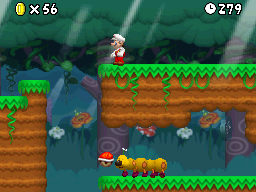 | |
| World | World 4 |
| Game | New Super Mario Bros. |
| Time limit | 300 seconds |
| Directory of levels >> | |
World 4-4 is the fifth level of World 4. Alternatively, World 4-A can be used to bypass this level.
Contents
Layout [ edit ]
This level features a lot of Wigglers. Mario can complete the Red Ring by getting a boost from a Wiggler. The first Star Coin is found in a small cave near a Wiggler. Later, Mario needs to hit a block that contains a Beanstalk to climb up it and continue. If the player goes left and Wall Jumps off the wall, they will find the second Star Coin. The last Star Coin can be obtained by sliding on a wall next to it, then Wall Jumping to the small pipes. After going through the Yellow Pipe, Mario reaches the flagpole.
There is a secret area in this level, reached by using a Mini Mushroom to go down the second small Warp Pipe from the left where there are four together, with a Wiggler on top. This secret area has a Mega Mushroom, and a lot of pipes to smash, along with some coins to collect.
Игра Мир Марио Брос
Ни для кого не секрет, что Супер Марио настоящий герой! Он обладает ловкостью и скоростью, которой могут позавидовать самые именитые герои. Вот только, чтобы держать себя в форме герою приходиться долго и упорно тренироваться. На это уходит много сил и времени, но конечный результат того стоит. Хотите к нему присоединиться? Тогда, добро пожаловать в игру «Мир Марио Брос»!
Как играть?
Здесь вы сможете потренировать свои пальчики и помочь Марио добиться новых результатов. Впереди игроков ждёт тридцать уровней, где предстоит продемонстрировать чудеса ловкости и молниеносную реакцию. Супер Марио будет автоматически бегать без остановок, а вот ваша задача — помочь ему вовремя прыгать, перемещаться по платформам и перепрыгивать острые шипы. Главная цель игры — собрать все грибочки и добраться до замка Супер Марио. Иногда придётся хорошенько напрячь свой мозг, чтобы выбрать правильную последовательность ходов. Эта игра отлично потренирует вашу ловкость и скорость, а также, прокачает логические навыки. Приятной игры и удачи!
Великолепный Марио: рождение легенды
Ровно 35 лет назад, 13 сентября 1985 года, состоялся релиз игры, на долгие годы определившей облик индустрии и заложившей фундаментальные основы жанра «платформер». Игры, которая принесла компании Nintendo баснословную прибыль и наглядно доказала, что спасение принцесс под силу не только рыцарям в сияющих доспехах, но и обычным водопроводчикам. В честь этой знаменательной даты мы подготовили для вас материал, повествующий о череде удивительных событий, подаривших миру одного из самых обаятельных персонажей за всю историю видеоигр.
Только бизнес и немного личного
30 апреля 1934 года в семье итальянских иммигрантов Луи и Рины Сегали, проживавших в Сиэтле (штат Вашингтон), родился долгожданный ребенок. В 1952 году Сегали-младший окончил среднюю школу, после чего в течение 5 лет работал в одной из местных строительных компаний, а в 1957 году принял решение основать собственный бизнес в сфере городского девелопмента и дорожного строительства. На старте будущая M.A. Segale Inc. состояла всего из двух сотрудников (самого Сегали и его жены Донны), однако благодаря упорной работе семейной пары предприятие постепенно трансформировалось из небольшой конторы, в активах которой значился единственный пикап, в одного из крупнейших региональных подрядчиков, а в 1998 году компания вошла в состав крупного ирландского концерна CRH plc, став частью его дочки Oldcastle Materials, базирующейся в Атланте. На тот момент совокупная стоимость M.A. Segale Inc. достигла 60 миллионов долларов США.
Ведение бизнеса в столь конкурентной нише требовало немалых денежных вливаний, поэтому Сегали параллельно осваивал смежные отрасли с целью получения дополнительных средств, которые в дальнейшем можно было бы инвестировать в развитие M.A. Segale Inc. Одним из таких направлений стала сдача в аренду складских помещений в пригороде Сиэтла. Занятие оказалось довольно прибыльным, хотя и доставляло бизнесмену немало хлопот: Сегали регулярно приходилось иметь дело с нерадивыми арендаторами, ни в какую не желавшими своевременно выполнять взятые на себя финансовые обязательства.
Одна из таких историй произошла в 1981 году. Небольшая японская компания, производившая аркадные автоматы, задумала покорить американский рынок и арендовала у Сегали под свою продукцию вместительный склад. Увы, ее дебютная игра потерпела полный коммерческий провал, что привело к неизбежной просрочке арендной платы. Сегали тогда лично встретился с главой американского филиала и строго отчитал его прямо перед подчиненными, однако в конечном счете сторонам удалось прийти к взаимовыгодному соглашению: компания получила необходимую отсрочку, благодаря чему ей удалось поправить свое финансовое положение и сполна расплатиться со всеми долгами.
Вряд ли хоть кто-то мог предположить, что благосклонность предпринимателя сыграет решающую роль в становлении индустрии видеоигр и приведет к появлению самого популярного в мире персонажа платформеров. Ведь нерадивым арендатором был не кто иной, как Минору Аракава, президент Nintendo of America, а устроившим ему разнос бизнесменом — Марио Сегали, в честь которого впоследствии и получил свое имя всемирно известный водопроводчик.
Марио Сегали и его виртуальный протагонист мало похожи друг на друга
Игра на выживание: от Donkey Kong до Super Mario Bros.
Само по себе появление в меру упитанного усатого коротышки в самом расцвете сил является следствием целой череды компромиссов и совпадений. Дебют Nintendo на американском рынке игровых автоматов действительно обернулся грандиозным провалом. Пользующийся огромной популярностью в Японии аркадный шутер Radar Scope (вариация на тему Space Invaders), на который компания делала основную ставку, с треском провалился. Из 3 тысяч привезенных в США игровых автоматов (всю партию пришлось заказать заранее у Ikegami Tsushinki, так как сама Nintendo не имела достаточных производственных мощностей) удалось реализовать лишь около тысячи, а остальные продолжили пылиться на том самом злополучном складе.
В такой ситуации наиболее логичным (и безопасным) для Nintendo стало бы признание поражения и сосредоточение на внутреннем рынке, однако Минору Аракава смог убедить своего отчима Хироси Ямаути, возглавлявшего компанию в те времена, пойти на рискованный шаг и вложиться в создание новой игры. Поскольку в компании катастрофически не хватало профессиональных гейм-дизайнеров, на должность руководителя проекта утвердили тогда еще совсем зеленого Сигэру Миямото, на счету которого было участие в одном-единственном проекте (и то лишь на вторых ролях) — том самом Radar Scope, который столь прохладно встретили американцы.
Однако это решение оказалось абсолютно верным: именно Сигэру смог создать подлинный шедевр, с которого и началось триумфальное восхождение Nintendo на олимп игровой индустрии.
Счастливая семья: Сигэру Миямото в окружении своих «детей» — Марио и Луиджи
Неопытность Миямото в гейм-дизайне в конечном счете и определила концепцию будущего проекта. В то время при разработке игр было модным заимствовать отдельные эпизоды из боевиков, будь то погони, перестрелки или сражения с пришельцами. Однако Сигэру хотел создать более целостный продукт, способный рассказать пусть короткую, но самодостаточную историю в рамках видеоигры для аркадного автомата. Да, как бы странно это ни звучало, но будущий Donkey Kong был во многом именно про сюжет, благодаря чему и смог завоевать сердца игроков.
Хотя сперва ни о какой гигантской горилле речи не шло, а в качестве главных героев игры предполагалось использовать персонажей комикса и одноименного мультфильма о Попае. По изначальной задумке в роли «damsel in distress» (кстати, этот троп был задействован в видеоигре впервые) выступала возлюбленная моряка Олив Ойл, а главным антагонистом должен был стать громила Блуто. Однако King Features Syndicate, которой принадлежали права на персонажей, отказала Nintendo, посчитав затею не слишком удачной. И пожалела об этом спустя всего год: на фоне успеха Donkey Kong компания все же дала проекту зеленый свет, и в 1982 году вышла игра Popeye, имевшая схожую концепцию, однако обрести мировую известность ей, увы, не было суждено.
После отказа King Features Syndicate Миямото нашел вдохновение в кинокартине 1933 года «Кинг-Конг». По сути, сюжет игры представлял собой переосмысление заключительной сцены фильма: обезумевший примат гигантских размеров карабкается по строительным лесам, сжимая в лапе красавицу Паулину (именно Паулину, а не принцессу Пич, как многие считают), а игрок берет на себя роль храброго плотника, который должен, минуя все препятствия, спасти свою возлюбленную.
Рекламный плакат к оригинальной игре Donkey Kong
Концепция оказалась гениальной в своей простоте: вся фабула умещалась на одном экране и не требовала каких-то особых выразительных средств или пояснений. Игрок мог сразу понять что почем: вот главный враг, вот красавица, которую нужно спасти, а вот и наш протагонист, на плечи которого возложена эта нелегкая задача. Сюжет игры был предельно прост, однако отличался целостностью и завершенностью.
Концепт-арт Donkey Kong, нарисованный Сигэру Миямото
Изначально главный герой значился во всех диздоках не иначе как Jumpman (Прыгун), и лишь благодаря просроченной аренде обрел простое, но запоминающееся имя. Что же касается образа персонажа, то он во многом стал таким из-за технических ограничений игровых автоматов. Спецовка и кепка появились благодаря тому, что существенно упростили работу художников и аниматоров, избавив от необходимости прорисовывать мелкие детали одежды и прическу, яркие цвета помогли выделить протагониста на фоне декораций, а перчатки Микки Мауса — четко обозначить кисти рук при совершении различных действий.
Широко раскрытые глаза, роскошные усы и нос картошкой делали Марио узнаваемым, но, чтобы все это можно было разглядеть на миниатюрном спрайте, человечка пришлось наделить анатомией Карлсона. Ну а профессию он сменил и вовсе благодаря бывшему однокурснику Сигэру Миямото: как-то раз в личном разговоре приятель гейм-дизайнера отметил, что костюм Марио решительно не подходит плотнику, а вот для водопроводчика будет в самый раз. Вот так, благодаря череде случайностей и несовершенству техники, на свет появился самый популярный персонаж за всю историю видеоигр, ставший впоследствии талисманом Nintendo.
На момент завершения разработки еще никто не подозревал, насколько успешной окажется новая игра. Поскольку судьба американского филиала Nintendo висела на волоске, «производство» аркадных автоматов было развернуто все на том же складе. Трем сотрудникам компании (дополнительный персонал был непозволительной роскошью) поручили установить новые программные платы в невостребованные 2 тысячи игровых автоматов Radar Scope и заменить наклейки на лицевых панелях. Впрочем, совсем скоро Nintendo столкнулась с другой проблемой: спрос на новую игру оказался настолько велик, что компания едва справлялась с его удовлетворением.
Аркадные автоматы Radar Scope, Donkey Kong и его сиквелов: найдите 10 отличий
На фоне успеха оригинала сиквел не заставил себя долго ждать: в 1982 году свет увидела игра Donkey Kong Jr. («Донки-Конг — младший»), в которой Марио выступил уже в роли главного антагониста (в первый и последний раз). По сюжету игры наш тогда еще плотник построил для гигантской гориллы прочную клетку, а игрок управлял племянником человекообразного хулигана, который должен был вызволить нерадивого родственника из неволи.
Следующее пришествие Марио на экраны игровых автоматов состоялось уже в 1983 году и расставило все точки над «i». Обаятельный усач официально сменил профессию, став водопроводчиком, да и действие игры перенеслось со строительных лесов под землю. Теперь Марио предстояло очистить городскую канализацию от невесть откуда взявшихся агрессивных черепах, крабов и гигантских мух, причем достаточно нетривиальным способом: когда противник появлялся на платформе, персонаж должен был ударить по ней снизу в прыжке и затем выбить врага за пределы экрана мощным пинком, пока тот беспомощно лежит на спине. Если не успеть этого сделать, противник переходил в следующую стадию, становясь более агрессивным и быстрым. А помогал в этом нелегком деле нашему героическому усачу брат-близнец Луиджи, носивший комбинезон зеленого цвета.
Следующее приключение братьев Марио (да-да, Марио, помимо прочего, еще и фамилия главных героев, что Сигэру Миямото официально подтвердил… лишь в 2015 году, во время празднования 30-летия франшизы) не заставило себя долго ждать: в 1985 году компания выпустила полноценный платформер Super Mario Bros. для домашней игровой системы Nintendo Entertainment System (Famicom). Игра имела оглушительный успех и даже попала в Книгу рекордов Гиннесса, став самым продаваемым тайтлом в истории индустрии: совокупный тираж Super Mario Bros. превысил 40 миллионов копий.
Что касается сюжета, то здесь со времен Donkey Kong мало что поменялось: Миямото вновь использовал «девицу в беде», с той лишь разницей, что теперь наш водопроводчик спасал не абы кого, а принцессу Грибного королевства Пич (от английского Peach — «персик»), а в роли его противника выступал грозный Король Боузер — лидер злобных черепах Купа. Зато по наполнению контентом Super Mario Bros. могла дать фору практически любой игре тех времен.
Ограниченное количество жизней (Марио, ко всему прочему, погибал с одного удара) делало платформер по-настоящему хардкорным, а таймер обратного отсчета добавлял динамики, мотивируя игрока постоянно двигаться вперед, ориентироваться в происходящем на ходу и совершенствовать собственные навыки. В сочетании с разрушаемым окружением и множеством секретов, большинство из которых можно было обнаружить лишь случайно, все это обеспечивало невероятную насыщенность игрового процесса.
Ну а после успешного прохождения в Super Mario Bros. открывался режим повышенной сложности, привносящий дополнительное разнообразие в геймплей:
Super Mario Bros. стала подлинной иконой индустрии, обозначив фундаментальные основы жанра, поэтому именно дату ее релиза и принято считать официальным днем рождения Марио. А герои игры во главе с великолепным водопроводчиком и по сей день кочуют из проекта в проект, продолжая радовать игроков по всему миру.
Впрочем, Nintendo не забыла и о других персонажах, принесших компании мировую славу. Простоватый Донки-Конг окончательно перевоспитался (видимо, пребывание в клетке, сооруженной Марио, оказало на примата благотворное влияние), получив собственную франшизу. Да и красотка Паулина в дальнейшем неоднократно появлялась в играх Nintendo и даже смогла выстроить политическую карьеру, став мэром Нью-Донка: в этом качестве ее можно встретить в Super Mario Odyssey.
А еще Паулина неплохо поет
Праздник со слезами на глазах
Увы, в наше время редкая бочка меда обходится без ложки дегтя, и даже столь знаменательное событие, как 35-летний юбилей Марио, не стало исключением. Хотя, казалось бы, кто мог испортить такой праздник, кроме, разумеется, самой Nintendo? Но ирония как раз и заключается в том, что именно «большая N» и не преминула воспользоваться столь удачно подвернувшимся случаем.
Давайте пофантазируем. Вы являетесь владельцем одной из богатейших компаний в игровой индустрии, и вам принадлежит самая успешная франшиза в истории видеоигр. Ключевому маскоту бренда исполняется 35 лет. Что можно придумать по такому случаю? Да буквально все что угодно. Например, выпустить лимитированную версию Nintendo Switch с уникальным дизайном и выгравированным на корпусе автографом Сигэру Миямото, способную занять почетное место на полке любого коллекционера. Или предложить фанатам достойные ремастеры классических игр серии, выполненные на уровне Super Mario Odyssey (если речь идет о 3D-играх) или New Super Mario Bros. U Deluxe (если говорить о традиционных платформерах с видом сбоку). Nintendo решили пойти по второму пути: 18 сентября 2020 года состоялся официальный релиз сборника Super Mario 3D All-Stars, куда вошли ремастеры Super Mario 64 (1996), Super Mario Sunshine (2002) и Super Mario Galaxy (2007). Вот только назвать их достойными язык не поворачивается, да и слово «ремастеры» стоит взять в кавычки.
Строго говоря, перед нами даже не совсем порты. Как выяснил дата-майнер OatmealDome еще до официального релиза, портом с натяжкой является лишь Super Mario Galaxy: в данном случае разработчики действительно перекомпилировали код оригинальной игры, добавив поддержку nVidia Tegra X1, однако нативно APU обрабатывает лишь игровую логику, в то время как за рендер и даже за воспроизведение звука отвечает эмулятор под кодовым названием hagi. В то же время Super Mario 64 и Super Mario Sunshine не были переделаны вообще: при желании их можно хоть сейчас запустить на том же Dolphin.
Все улучшения графики (весьма скромные, надо отметить) и исправления перевода применяются «на лету», точно так же, как это реализовано в свободных эмуляторах классических консолей, хотя последние справляются со своей задачей куда лучше, нежели фирменный «костыль» от Nintendo. И только главное меню сборника является оригинальным: оно выполнено на базе LunchPack, который также использовался в играх серии Splatoon, Super Mario Maker и Animal Crossing.
В Super Mario 64 немного улучшены текстуры и увеличено разрешение рендера, но этим дело и ограничивается
Таким образом по факту мы имеем дело не с ремастерами, а с максимально «ленивым» ретекстуром, где не было изменено практически ничего. На фоне недавних Crash Bandicoot N. Sane Trilogy от «главных жадин» индустрии Activision или того же Medievil от Sony такое отношение к преданным фанатам можно назвать откровенно свинским, особенно с учетом круглой даты.
Впрочем, за положительными примерами даже не надо ходить к другим издателям, ведь в прошлом году Nintendo наглядно продемонстрировала, что способна сделать шикарный ремейк классической игры в современной обертке. Речь идет, конечно же, о во всех смыслах замечательной The Legend of Zelda: Link’s Awakening.
The Legend of Zelda: Link’s Awakening — образцовый ремейк от Nintendo
Оригинальный проект был выпущен в далеком 1993-м, став первой игрой франшизы, вышедшей на портативной консоли Game Boy. Ремейк образца 2019 года был воссоздан с нуля в полном 3D, причем с каким-то сверхчеловеческим вниманием к деталям: буквально каждый кустик остался на своем законном месте. И хотя многие критики ставили игре в укор устаревший гейм-дизайн, на практике The Legend of Zelda: Link’s Awakening как раз и можно назвать образцовым ремейком: запустив эту игру, вы испытаете ровно те же самые ощущения, что дарил вам оригинал, с поправкой на современные визуальные технологии, которые, впрочем, ничуть не испортили ни геймплей, ни «ламповость» атмосферы.
Даже пасхалки остались на своих местах
На фоне The Legend of Zelda: Link’s Awakening ситуация с Super Mario 3D All-Stars выглядит несуразной, словно кто-то внутри компании намеренно саботировал юбилей Марио. Впрочем, если рассуждать логически, то все встает на свои места, хотя выводы для игрового сообщества будут и не самыми утешительными.
Nintendo подарила нам с вами немало замечательных игр (и все еще продолжает их разрабатывать), но сегодня это в первую очередь огромная корпорация, действия которой определяются экономической целесообразностью. Собрав вокруг себя многомиллионную армию фанатов, компания весьма прозрачно обозначила намерение монетизировать собственные репутационные активы. И столь контрастное качество продуктов лишь наглядно это подтверждает. Давайте сравним между собой The Legend of Zelda: Link’s Awakening образца 1993 и 2019 годов.
В оригинал, если бы Nintendo выпустила его без изменений, лишь адаптировав под разрешение экрана Switch и добавив цветные спрайты, сегодня смог бы играть разве что ностальгирующий геймер, заставший тот самый релиз, вышедший 27 лет назад, или более позднее переиздание 1998 года — The Legend of Zelda: Link’s Awakening DX, выпущенное для Game Boy Color. А поскольку эта игра даже не является номерной частью франшизы (ее действие происходит не в королевстве Хайрул, а на острове Кохолинт, да и самой Зельды вы здесь не встретите), «ленивый» порт не смог бы привлечь внимание ни новых игроков, ни тех, кто приобщился к легендарной серии лишь недавно. Поэтому большая N приложила все возможные усилия, чтобы сделать ремейк-конфетку, который окажется интересен достаточно широкому кругу игроков, при этом досконально воссоздала исходные локации, добавив отличный оркестровый саундтрек и сохранив дух оригинала.
Ситуация с Super Mario 3D All-Stars диаметрально противоположная. Из всей троицы лишь Super Mario 64 выглядит морально устаревшим, но с учетом популярности франшизы (а об усатом водопроводчике знают даже те, кто не интересуется видеоиграми в принципе) и знаковости перечисленных тайтлов, даже эту игру с удовольствием купят и пройдут заново, благо core-геймплей всех трех игр таков, что они будут актуальны и еще через 10 лет. Выходит, что и напрягаться незачем: достаточно прикрутить к исходным дистрибутивам эмулятор, сделать новое меню для сборника — и дело в шляпе!
«А если не будут брать, отключим газ», — подумал про себя один из топ-менеджеров компании, решив добавить эксклюзивности в и без того эксклюзивный проект, и подписал распоряжение о том, чтобы «ремастеры» находились в продаже лишь ограниченное время — до 31 марта 2021 года включительно. Уже в апреле Super Mario 3D All-Stars должен навсегда исчезнуть из eShop, и вскоре единственным легальным способом поиграть в этот сборник станет приобретение физической копии с рук, ведь дополнительный тираж картриджей также не планируется. Так что всем, кто находится в поисках надежных активов для инвестиций, рекомендуем присмотреться к покупке этого издания, ведь со временем оно будет лишь дорожать.
Super Mario 3D All-Stars — самое надежное вложение ваших средств
И хотя без ревью-бомбинга в этот раз не обошлось, это мало на что повлияло: 6,5 балла пользовательского рейтинга и гневные отзывы на Metacritic практически не отразились на продажах.
Пользователи Metacritic активно жалуются на качество «ремастеров», но Nintendo не обращает на это внимания
С другой стороны, раз уж Nintendo в текущем поколении стала экономить на консолях и при этом даже не боится судебных разбирательств (а 23 сентября в адрес компании был направлен уже второй иск, связанный с качеством джойконов, на этот раз составленный французской ассоциацией потребителей UFC-Que Choisir), то использованию порочных практик в сфере цифровой дистрибуции не приходится удивляться.
Кстати, если уж речь зашла о железе, вот еще один интересный факт: внутренней памяти Nintendo Switch недостаточно для того, чтобы вместить все игры о Марио и его друзьях, официально доступные на данной платформе. Давайте посчитаем!
Super Mario Bros Walkthrough World 4
This Super Mario Bros walkthrough is divided into 8 total pages.
You can jump to nearby pages of the game using the links above.
World 4
World 4-1 is another one of those levels that is technically Overworld, but could also count as Athletic. It can also be one of the easiest levels in the game if you know what to do.
Moving along, we get to meet our first and only real opponent in this level, Lakitu. Lakitu, floats high above in the air, throwing Spinies at you, and, of course, there’s the usual pipes with Piranha Plants in them.
Spinies cannot be defeated by jumping on them, obviously, so either destroy them with fire power, or ignore them.
The first Q block has a power up. The one above Mario has a coin. However, if one were to get up on top of that other Q block, one would have a chance of jumping on top of Lakitu, and sending him to kingdom come.
If you do manage to get rid of Lakitu, this level just became a lot easier. Otherwise, your best bet is to just run, and keep on running, avoiding the Spinies as best as you can.
Coins will appear, but sometimes, it’s best to ignore them.
After awhile, there are four Q blocks with coins in each of them. Other than getting another shot at knocking down Lakitu, it’s best to just keep moving.
Obviously, pits and obstructions will hamper your progress through this level. Since there are no ground forces besides the Spinies, they shouldn’t be too much to handle.
Here are four more Q blocks with coins in them. If you stand on the blocks, right in the middle, and jump, you will get, not only an extra life, but also an extra chance to take out Lakitu.
Another obstruction here with more coins.
A pipe with more coins here.
. and another pipe with more coins here. (This pipe will take you to Coin Room D).
This gives you another opportunity to get Lakitu. You can also collect the coins from the Q blocks if you want, as well as a power up that is directly left of the bricks.
Another pipe here.
These two pits right here could possibly trip you up if you are not expecting them. This might be one of the few times you will want to slow down so you don’t fall into the pits.
Another place where you want to be careful you make it all the way over, all the while avoiding Lakitu if you have to.
Otherwise, it’s just a straight run to the end stairs.
Lakitu won’t follow you over here, so you’re safe. That brick right there contains 10 coins. You can get the coins, jump back up the stairs, and still get a pretty decent score.
Moving on, then, to World 4-2.
Alright, back to this cutscene. This time it takes us.
. underground. This area, though, is quite a bit more complicated than the previous underground scenery.
These platforms are simply dreadful. The one Mario is about to land on is about the only supposedly safe one to try. Don’t even bother with the real skinny one, because it’s simply not worth it. Running and jumping can take you over to the other side just fine.
If you’re small, you can make it through there. Otherwise, Just take the top path. Something to note is that the brick above the middle coin contains a power up.
Three goombas to deal with down the path. There’s not much room to jump, so iti’s preferable to use fire power. If not, then just carefully jump on them one after the other, and you’ll be fine.
Starting from the right, bump your head against the bricks until you count to five. If you are bigger, break the bricks above the fifth brick to find a block with 10 coins.
The middle of the set of three Q blocks has a power up. All the others have coins.
This platform moves vertically downward, so either jump quickly from the platform to the bricks to get to the ceiling or continue onwards. (If you are small this is your last chance to get to the ceiling).
There are four hidden blocks here, directly underneath the row of three bricks as well as directly left of that row. Revealing those blocks will create stairs that will allow you to bump your head against the left most brick, which will create a vine. (The vine will lead you to a Warpzone). Take the Warpzone, or continue on your way through this level.
Here is a set of three pipes. They each have enemies in them, in between them, and are practically impossible to hit with fire power, so be very careful when traversing this area. However, if you’re feeling brave, the brick that Mario is standing on contains 10 coins, while the brick adjacent to the pipe on the other side has a star. (Also, that third pipe over there takes you to Coin Room E).
You will also notice that there is a new enemy here, the Buzzy Beetle. These things are immune from most attacks, including fire balls, and are best ignored when encountered.
Another pipe after that set of three. That brick hanging there is a red herring.
Two more Troopas here.
. along the way to a pipe in between two pits. Wait for the Piranha Plant to go back in before attempting to cross.
After that, we’ve got another similar situation with two elevators that go down and up respectively.
Cross over to the middle, then either cross to the other side, or take the elevator to get on top of the ceiling. Before you do that though, the middle of the set of bricks that is above Mario contains a power up.
Two more pipes here with a Troopa in between.
. followed by a third pipe, and a pit.
The pits not to big a deal, just be careful you don’t hit that Buzzy Beetle.
This platform only goes down, so don’t think you can get to the ceiling from here.
The brick that Mario is touching has a power up.
However, with those Troopas so close and Mario being small, it’s better to just take the high road anyway. If your bigger, then, by all means, get the power up.
A very tall pipe that you will have to wait for the Piranha Plant before you can cross. (If you are big, this is your last chance to get to the ceiling).
And right here is the way out. (If you are still on the ceiling, continue onwards to reach another Warpzone).
. and to the flag to the next level.
World 4-3 is an official Athletic setting.
Sadly, we’re back to the treetops, (or should I say mushroom tops?), and there will be more of this balancing platforms as well.
Best to just wait for the Troopas to be going the other way before you attempt to jump up there.
The lack of traction will take you far, but it shouldn’t take you too far that you run into the Troopas.
So they won’t be in the way, it’s a good idea to get rid of these Troopas. Jumping on them and knocking them over the side, or shooting them with fire balls will both work.
Make sure you havea good running start, and Mario should just barely be able to make it up there.
After that, jump over here and do your best to grab the power up in the Q Block if you can.
Now, here’s where the real grit of the level starts. Use the same strategy as before, and stay on the platforms as little as you can. (If you feel like a daredevil, staying on the platform until it breaks will get you 1000pts).
The platform on the far right moves vertically, so jump from platform to platform until you are safe on it.
Same goes for the other platform on the right.
Staying as high as you can go is probably your safest bet when traversing a level like this. The platforms are easier to get to, and, if you fall, there is a chance that you can land on a platform instead of dieing.
Another set of balancing platforms here, with a platform in between.
This right here can be very nerve racking, so just be patient. Try and bypass the lower of the balancing platforms that Mario is jumping over, and jump, instead, to the second from the right.
Hesitation will get you nowhere, so immediately jump off that platform and try and land on that Mushroom below Mario.
Go from Mushroom to Mushroom.
And again, Mushroom to Mushroom, though if you don’t trust yourself, you can use the balancing platform to give you a closer jump. Just remember to jump as soon as you land on that platform, for it will go down at a rapid pace.
Alright, well you’ve gotten through the worst of it now, so just continue onwards from Mushroom to Mushroom.
This platform moves in a vertical direction, so jump on it.
. and use it to get as high on the flagpole as you can. Alright, all that’s left now is the castle.
World 4’s castle level features the first time in the game where you can fail if you choose the incorrect path, so, first time readers and players, pay attention to what I am about to say for this upcoming level.
These two pits aren’t to terrible, just a small platform to worry about.
Here, we have our first branching pathway. If you choose the lower path, you’ll be on an endless loop of this little corridor, so choose the top path if you want to find your way out.
You will also avoid troublesome enemies along the way.
. though there are still firebars to worry about.
After that hallway, you’ll come to this area over here.
This time, you have three different paths to choose from. Only the lower path will take you further onward.
As soon as you get to the end, Fire balls will start coming towards you.
There’s a little safety hole there before the actual fight begins.
Other than a firebar, there isn’t really much keeping you from jumping over or running under him to reach the switch.
So, that’s all there is to it. The lack of any real enemies, plus the completely open area you get in this fight, makes this one of the easier castles in the game.
«It’s just too bad it couldn’t have been the last one.
More Super Mario Bros Walkthroughs
This Super Mario Bros walkthrough is divided into 8 total pages.
World 8-4 (Super Mario Bros.: The Lost Levels)
| Level | |
|---|---|
| World 8-4 | |
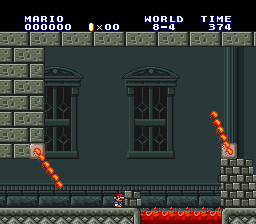 | |
| Level code | World 8-4 |
| World | World 8 |
| Game | Super Mario Bros.: The Lost Levels |
| Time limit | 400 seconds |
| Boss | Bowser’s Brother Bowser |
| Directory of levels >> >> | |
World 8-4 is the fourth and final level of World 8 in Super Mario Bros.: The Lost Levels as well as the thirty-second and final level in the game overall, taking place in Bowser’s Castle. In the Super Mario All-Stars version of the game, there is lightning flashing outside the castle and on the level card, a trait this level shares with World D-4.
Upon defeating Bowser, the level progression changes depending on the version of the game being played. If no Warp Zones were taken, the player will progress to World 9. Beating the game eight consecutive times and holding down the A Button in the original game or the B Button in the Famicom Mini version for the Game Boy Advance will allow the player access to World A. In Super Mario All-Stars, the player only needs to beat Bowser once to access World A, though if the no Warp Zones requirement is met, the player will move on to World 9 instead. In Super Mario Bros. Deluxe, the game ends.
Layout [ edit ]
The player starts on some stairs. In order to jump across the pool of lava, the player has to fall onto the floor below and do a running jump. Then the player has to pass through a hall with Fire Bars on the ceiling, then run and jump across the next pool of lava, using the block on the ground as a step and avoiding the Hidden Block with a Poison Mushroom, the Lava Bubble jumping up, and the Fire Bar on the other end. Then the player has to jump off of a Koopa Paratroopa to reach the first Warp Pipe with a Piranha Plant, which leads to the next area. If the player continues jumping across the pipes in this room, it will loop around to the hall with the Fire Bars.
The next room is underwater, with Bloopers and Fire Bars. Simply entering the Warp Pipe on the other end will take the player to the next area.
In the next room, the player can find a power-up in a Hidden Block against the wall to the left. To enter the next area, the player has to jump onto the platform on the right and jump around it to land on the Warp Pipe below, avoiding the Piranha Plants.
In the final area, the second Warp Pipe will lead the player back to the beginning of the level, and Hidden Blocks prevent the player from jumping out of the pit the pipe is in. After the pipes is Bowser’s Brother, who will breathe fire and throw Hammers. After a long hall with a falling platform, a hanging Piranha Plant, and a Buzzy Beetle, the player will encounter Bowser, who also breathes fire and throws hammers, as well as having a Fire Bar above him. Defeating Bowser and/or touching the axe will allow the player to enter the chamber with Princess Peach.
World 6-4 (Super Mario Bros.: The Lost Levels)
It has been requested that more images be uploaded for this article. Remove this notice only after the additional image(s) have been added. Specifics: Base game
| Level | |
|---|---|
| World 6-4 | |
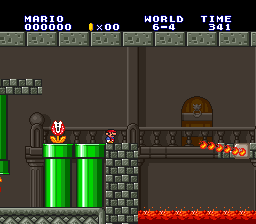 | |
| Level code | World 6-4 |
| World | World 6 |
| Game | Super Mario Bros.: The Lost Levels |
| Time limit | 400 seconds |
| Boss | Fake Bowser (Bloober) |
| Directory of levels >> | |
World 6-4 is the fourth and final level of World 6 in Super Mario Bros.: The Lost Levels and the twenty-fourth level overall in said game.
Contents
Layout [ edit ]
Like with World 3-4, World 6-4 consists of puzzles where the player must choose the correct path in order to move forward. The player starts next to a small platform suspended over a pit of lava. After crossing the lava, the player will have to move through the correct paths ahead in order to progress through the level. In Super Mario All-Stars, if it is correct, a ding indicating so sounds; if wrong, a buzzer sounds. For the first path, the player has to jump over the pipe with a Piranha Plant and walk under the platform with a long Fire-Bar. Walking under the hanging pipe with a Piranha Plant, the player then needs to defeat or avoid a Hammer Brother and jump up the platforms to reach the top path, moving to the end and avoiding the Fire-Bars. Taking any other path will result in the player returning to the first pipe.
For the second puzzle, the player needs to take the lower path with the Piranha Plants, then jump across the platforms with Fire-Bars. Using the downward moving lifts if needed, the player needs to then take the next bottom path, avoiding the Podoboo and long Fire-Bar. Taking any other path will result in the player returning to the first pipe in this puzzle. After completing the puzzles, the player will have to avoid incoming Fire Breath as they jump across a large lava pit with a horizontally moving lift and jump over a pillar before reaching the fake Bowser. This fake Bowser throws hammers and also has a Podoboo jumping from below and a large brick formation above, within which is a Coin Block.
Super Mario Bros.
Super Mario Bros. is a video game released for the Family Computer and Nintendo Entertainment System in 1985. It shifted the gameplay away from its single-screen arcade predecessor, Mario Bros., and instead featured side-scrolling platformer levels. While not the first game of the Mario franchise (the first being Donkey Kong), Super Mario Bros. is the most iconic, and introduced various series staples, including power-ups, classic enemies such as Little Goombas, and the basic premise of rescuing Princess Toadstool from King Koopa.
As well as kicking off an entire series of Super Mario platformer games, the wild success of Super Mario Bros. popularized the genre as a whole, helped revive the North American gaming industry after the video game crash of 1983, and was largely responsible for the initial success of the NES, with which it was bundled as a launch title. Until it was eventually surpassed by Wii Sports, Super Mario Bros. was the best-selling video game of all time for nearly three decades, with over 40 million copies sold worldwide.
The exact day of the North American release of Super Mario Bros. is heavily disputed, with different sources giving different dates with no way to verify them. Regardless, Nintendo officially pinpoints the release date as October 18, 1985. [1]
A successor named Super Mario Bros. 2 in Japan (later renamed Super Mario Bros.: The Lost Levels in North America) was released on June 3, 1986. Another successor sharing its English name with its predecessor’s Japanese name was released on October 9, 1988. A third successor named Super Mario Bros. 3 was released on October 23, 1988.
Contents
Story
The following text is taken directly from the NES instruction booklet localization.
The only one who can undo the magic spell on the Mushroom People and return them to their normal selves is the Princess Toadstool, the daughter of the Mushroom King. Unfortunately, she is presently in the hands of the great Koopa turtle king.
Mario, the hero of the story (maybe) hears about the Mushroom People’s plight and sets out on a quest to free the Mushroom Princess from the evil Koopa and restore the fallen kingdom of the Mushroom People.
You are Mario! It’s up to you to save the Mushroom People from the black magic of the Koopa!
Gameplay
Super Mario Bros. is divided into eight worlds, each of them containing four levels. Mario (or, in the case of a second player, his brother Luigi) has to get to the end of the level by jumping over various gaps and avoiding the enemies on his way. He can use several platforms (some of them collapse when Mario lands on them), stairs in the level, as well as jumping boards. There are also pipes along the way, some of which Mario can enter to visit various secret coin rooms before returning to the level, a bit further ahead than when he left.
Enemies include Little Goombas, Koopa Troopas, Buzzy Beetles, Koopa Paratroopas, Bullet Bills, Hammer Brothers, and leaping Cheep-cheeps. All these enemies can be defeated when Mario jumps on them. Koopa Troopas and Buzzy Beetles cower in their shell when jumped on, which Mario can kick to defeat other enemies with. Koopa Paratroopas lose their wings and fall to the ground when Mario jumps on them. Other enemies include Piranha Plants, and the Spiny-throwing Lakitus, and Mario has to either shoot fireballs at them or just avoid them. Two levels take place underwater. In the water, Mario can swim freely from the top to the bottom of the screen. The enemies in underwater levels are Bloobers and Cheep-cheeps. Mario can only defeat these creatures by shooting them with fireballs.
At the end of each level, a castle stands with a flagpole nearby. When Mario reaches the flagpole, he takes down the enemy flag and enters the castle, completing the level. The higher the spot that Mario hits the flagpole, the more points he receives. If two players are playing the game, Luigi’s turn comes whenever Mario loses a life. Luigi has no special abilities in the game that are different from Mario’s.
The fourth level of each world plays inside a castle. They are usually filled with Fire-Bars and Podoboos. At the end of a castle level, Mario is confronted with a fake Bowser in Worlds 1 through 7 and the actual Bowser in World 8. Mario and Luigi ordinarily have no way to hurt the fake Bowsers or the actual Bowser and have to either use the ax to destroy the bridge, causing either the false or real one to fall into the lava, or pelt him with many fireballs, which produces the same result and reveals the true forms of the fakes. After defeating an impostor, Mario frees one of the seven remaining mushroom retainers from the castle, at which point they say their iconic phrase: «Thank you, Mario! But our princess is in another castle!» At the end of the castle in World 8, Mario frees the grateful Princess Toadstool and completes his adventure, having the choice to continue playing in a «new quest.» In this second quest, the player gets to choose a world, and replay some levels. However, all Little Goombas are replaced by Buzzy Beetles, all ground enemies are also considerably faster, some platforms and elevator-style lifts are shortened in length, and the level design is slightly changed for some levels (see below at «Hard mode»).
Controls
NES Controller / NES Classic Controller / Nintendo Switch Online NES Controller
Wii Remote
Wii Classic Controller
Nintendo GameCube Controller
Game Boy Advance
Nintendo 3DS
Wii U GamePad / Wii U Pro Controller
Joy-Con (pair)/ Nintendo Switch Pro Controller
Joy-Con (sideways)
Characters
Playable characters
Supporting characters
Enemies
| Name | Sprite | Description |
|---|---|---|
| Bloober | A squid-like sentry that persistently pursues the player. | |
| Bullet Bill |  | A slow but steady bullet that has eyes and arms. They come from Turtle Cannons, and the only way to defeat them is to stomp on them or hit them while under the influence of a Starman. |
| Buzzy Beetle |  | A small turtle that hides in its shell when jumped on, just like Koopa Troopas; unlike them, however, it is immune to fireballs. They replace Little Goombas in Hard Mode. |
| Cheep-cheep |  | A red or gray fish normally found swimming in water. Gray ones are slightly slower. In certain levels, starting with World 2-3, the red ones will leap from the water, trying to hit Mario or Luigi. |
| Fire-Bar |  | Various fireballs stacked together moving either clockwise or counterclockwise. Their length may vary. |
| Hammer Brother | A green biped, helmeted Koopa that comes in a pair. They throw an endless number of hammers towards Mario and at certain times they jump. | |
| Koopa Paratroopa | A Koopa Troopa with wings. Green ones jump towards the player or fly back and forth, while red ones fly up and down. | |
| Koopa Troopa |   | A soldier of the Turtle Empire that marches onwards. If stomped, it retreats in its shell, which can be kicked to hit other enemies and gain points. Green ones walk back and forth just like Little Goombas, and red ones turn around when they find a pit. |
| Lakitu | A bespectacled Koopa hiding in a small cloud. It throws an infinite number of Spiny’s eggs towards the player. | |
| Little Goomba | A mushroom traitor that walks back and forth. They are the weakest and most common enemies throughout the game and can be stomped or hit with fireballs or a Starman. They are replaced with Buzzy Beetles in Hard Mode. | |
| Piranha Plant | A carnivorous plant that lives in a pipe. It rises, trying to hit Mario and retreats. If Mario is near, it will not rise. | |
| Podoboo | A fireball guardian of the Koopa King’s lair. It jumps from the lava, trying to hit Mario. | |
| Spiny | Lakitu’s small yet tough pet with a red, spiked shell. If Mario tries to stomp it, he will get damaged. | |
| Spiny’s egg |  | A red, spiked egg thrown by Lakitus. Once it hits the ground, it immediately hatches into a Spiny. |
| Turtle Cannon | An indestructible cannon. It shoots an endless number of Bullet Bills; however, it does nothing if the player is near it. |
Bosses
Items
| Coin |  | 200 points | Very Common | Collecting 100 of them gives an extra life. |
|---|---|---|---|---|
| Magic Mushroom |  | 1000 points | Uncommon | Gives the Super form. |
| Fire Flower |  | 1000 points | Uncommon | Gives the ability to shoot fireballs. |
| Starman |  | 1000 points | Rare | Gives invincibility for a moment. |
| 1 up Mushroom | 0 points | Rare | Gives an extra life. |
Transformations
List of levels
| World | Level | Setting | Enemies found |
|---|---|---|---|
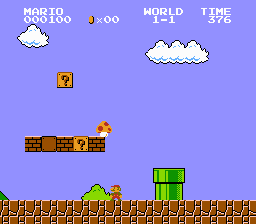 | World 1-1 | Overworld | Little Goomba, Koopa Troopa |
| World 1-2 | Underground | Little Goomba, Koopa Troopa, Piranha Plant | |
| World 1-3 | Athletic | Little Goomba, Koopa Troopa, Koopa Paratroopa | |
| World 1-4 | Castle | Fire-Bar, fake Bowser (Little Goomba) | |
 | World 2-1 | Overworld | Little Goomba, Koopa Troopa, Koopa Paratroopa, Piranha Plant |
| World 2-2 | Underwater | Blooper, Cheep-cheep, Piranha Plant | |
| World 2-3 | Athletic | Cheep-cheep | |
| World 2-4 | Castle | Fire-Bar, Podoboo, fake Bowser (Koopa Troopa) | |
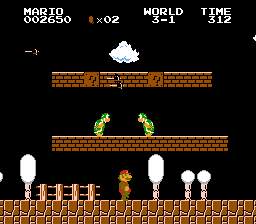 | World 3-1 | Overworld | Little Goomba, Koopa Troopa, Koopa Paratroopa, Piranha Plant, Hammer Brother |
| World 3-2 | Overworld | Little Goomba, Koopa Troopa, Koopa Paratroopa, Piranha Plant | |
| World 3-3 | Athletic | Little Goomba, Koopa Troopa, Koopa Paratroopa | |
| World 3-4 | Castle | Fire-Bar, Podoboo, fake Bowser (Buzzy Beetle) | |
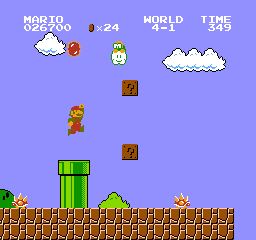 | World 4-1 | Overworld | Piranha Plant, Lakitu, Spiny |
| World 4-2 | Underground | Little Goomba, Koopa Troopa, Piranha Plant, Buzzy Beetle | |
| World 4-3 | Athletic | Koopa Troopa, Koopa Paratroopa | |
| World 4-4 | Castle | Piranha Plant, Podoboo, Fire-Bar, fake Bowser (Spiny) | |
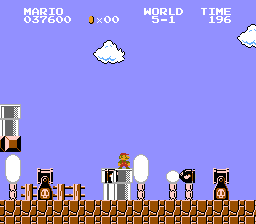 | World 5-1 | Overworld | Little Goomba, Koopa Troopa, Koopa Paratroopa, Piranha Plant, Bullet Bill |
| World 5-2 | Overworld | Little Goomba, Koopa Troopa, Koopa Paratroopa, Piranha Plant, Buzzy Beetle, Bullet Bill, Hammer Brother (Bloober, Cheep-cheep) | |
| World 5-3 | Athletic | Little Goomba, Koopa Troopa, Koopa Paratroopa, Bullet Bill | |
| World 5-4 | Castle | Podoboo, Fire-Bar, fake Bowser (Lakitu) | |
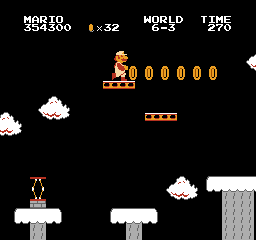 | World 6-1 | Overworld | Piranha Plant, Lakitu, Spiny |
| World 6-2 | Overworld | Little Goomba, Koopa Troopa, Koopa Paratroopa, Piranha Plant, Buzzy Beetle (Bloober, Cheep-cheep) | |
| World 6-3 | Athletic | Bullet Bill | |
| World 6-4 | Castle | Podoboo, Fire-Bar, fake Bowser (Bloober) | |
 | World 7-1 | Overworld | Koopa Troopa, Koopa Paratroopa, Piranha Plant, Buzzy Beetle, Hammer Brother, Bullet Bill |
| World 7-2 | Underwater | Bloober, Cheep-cheep, Piranha Plant | |
| World 7-3 | Athletic | Cheep-cheep, Koopa Troopa, Koopa Paratroopa | |
| World 7-4 | Castle | Podoboo, Fire-Bar, fake Bowser (Hammer Brother) | |
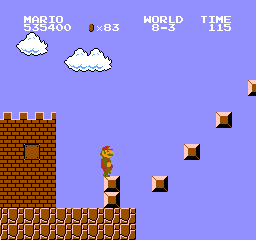 | World 8-1 | Overworld | Little Goomba, Koopa Troopa, Koopa Paratroopa, Piranha Plant, Buzzy Beetle |
| World 8-2 | Overworld | Little Goomba, Koopa Paratroopa, Piranha Plant, Buzzy Beetle, Lakitu, Spiny, Bullet Bill | |
| World 8-3 | Overworld | Koopa Troopa, Koopa Paratroopa, Piranha Plant, Bullet Bill, Hammer Brother | |
| World 8-4 | Castle | Little Goomba, Koopa Paratroopa, Piranha Plant, Fire-Bar, Podoboo, Buzzy Beetle, Hammer Brother, Bloober, Cheep-cheep, Bowser |
Hard mode
Glitches
Minus World
To perform the glitch, Mario must go to World 1-2 and stand on top of the pipe that leads to the above-ground flag, without going in the pipe. Then he must break the second and third block from the pipe, but leave the one on the far right. Then he must stand on the left edge of the pipe (facing left) and duck. He then has to jump while in a ducking position and move right in mid-air (while still facing left). If done correctly, Mario will go through the block on the far right and the wall to the Warp Zone. Mario must then go through the pipe that would normally lead to World 2-1 or World 4-1, and Mario will enter the Minus World.
Over the Flagpole
In some levels, it is possible to jump over the flagpole. Beyond the flag pole is nothing but an endless path. There is nothing to do; all that can be done is wait for the timer to get to zero. To do this glitch in World 1-1, right after the second pit, Mario needs to wait for the Koopa Troopa to about to fall into the pit and simultaneously jump at the top of the level right above the Koopa. After that, the Koopa will be stuck underneath the level, but the player will still be able to see it. When the Koopa starts to walk under the level, Mario should follow it to the end. Along the way, it is required to grab a Magic Mushroom. When the Koopa is halfway between the staircase and the flagpole, the player must do the glitch again and Mario will jump above the flagpole.
To do this glitch in World 3-3, at the end of the level the player must stand on the last lift until another one has completely lifted, before falling off. After that, the player must accelerate as fast as possible and jump from the far edge of the lift. The lift should not lower while doing so. [10]
There is a brick right after the fortress’s or castle’s first door, which stops Mario from going past the Fortress at the end of the levels.
In Super Mario Bros.: The Lost Levels, this is exploited to hide Warp Zones. In worlds 3-1 and A-3, there are warp zones placed beyond the goals. In other worlds, while it is possible to go over the flagpole, the edge of the world is a few steps past the fortress, and the player is not able to go far enough for the flagpole to scroll off the screen.
This glitch was fixed in the SNES version of the game.
This glitch/trick was featured in the 25th-anniversary super play.
Staff
Director
Original Music
Designers
Programmers
Producer
Executive Producer
Development
Development for Super Mario Bros. began after Shigeru Miyamoto and Takashi Tezuka finished two other games together beforehand: Excitebike and Devil World. When designing Super Mario Bros., they wanted to use the scrolling screens of Excitebike and the large character sprites from Devil World, to make Super Mario Bros. stand out from other titles. Miyamoto and Tezuka wanted to fit various technologies into the game, comparing it to a puzzle. The name «Super Mario Bros.» also came from Mario’s new Super form. [11]
Super Mario Bros. was developed at the same time as The Legend of Zelda, and both shared numerous staff members: Shigeru Miyamoto, Takashi Tezuka, Toshihiko Nakago, Koji Kondo, Kazuaki Morita, Yasunari Nishida, and Hiroshi Yamauchi. According to the developers, some aspects of Super Mario Bros. were taken from The Legend of Zelda; Fire-Bars were one example, as they were present in the dungeons in The Legend of Zelda. Miyamoto implemented Fire-Bars into Super Mario Bros. as an obstacle.
According to Toru Iwatani, creator of Pac-Man, Shigeru Miyamoto told him personally that Super Mario Bros. was influenced by Pac-Land, the pioneer of action games with horizontally running background. [16]
The Ending BGM in the Famicom Disk System version of Super Mario Bros.: The Lost Levels was first composed as the ending theme of Super Mario Bros., before being shortened due to storage limitations. [17]
Regional differences
The European version of the game adds one pixel to the hitboxes of Little Goombas, Spinies, Piranha Plants, Bloobers, Cheep-cheeps and Bullet Bills. [18]
Pre-release and unused content
Reception and legacy
Super Mario Bros. received critical acclaim and is considered one of the best games of all time. One of the most-praised aspects of the game is the precise controls, which allow players to control how far and high the characters jump and how fast they can run. The game popularized side-scrolling video games, and the game has since received several sequels and spin-offs, and many different ports and alternative versions. All characters, enemies, and items found in the game have become core elements of the Mario franchise and the plot of Bowser kidnapping the princess has continued to be used throughout the core Super Mario series.
The game’s impact on popular culture was so big that during 2010, a street in Zaragoza, Aragón (Spain), was named after it, with a ceremony being held in celebration. [22]
Игра Новый Супер Марио Брос Мультиплеер
Грибное Королевство каждый день предлагает множество вариантов для захватывающего времяпрепровождения, и итальянец Марио с удовольствием их использует. Присоединяйся к нему во время очередного путешествия, в ходе которого ты сможешь преодолевать препятствия, бороться с противниками и выполнять множество миссий.
Как играть?
Игра проходит в многопользовательском режиме, и перед ее началом тебе следует ввести свой ник-нейм в поле, которое появится в верхней части экрана. После этого ты сможешь присоединиться к одной из уже созданных другими игроками комнат, либо создать свою собственную. В последнем случае ты сможешь задать все подходящие тебе параметры игры, после чего начнется приключение, в котором примут участие и другие игроки. С его началом на стартовой точке путешествия окажется Марио, перемещением которого стоит управлять, используя клавиши со стрелками. Помогай ему ловко перепрыгивать препятствия, ловушки и опасных для него существ. Последних можно еще и давить, запрыгнув каждому из них на голову. За это тебе будут начисляться дополнительные очки. Для прыжка нужно нажимать пробел. Получай разные бустеры, чтобы приключение было еще интереснее.
Super Mario Bros. / スーパーマリオブラザーズ / Супербратья Марио
В стране, далеко за пределами человеческого воображения, лежит волшебное место под названием Грибное Царство. В Грибном Царстве всегда солнечно, и еды в изобилии круглый год. Царством управляли кроткий и миролюбивый грибной Король и его дочь, Принцесса Поганка (Princess Toadstool), которая позже стала известна как Принцесса Персик (Princess Peach). Грибной народ жил мирно, и все было хорошо.
Марио, человек мужества и решимости, услышал об ужасной судьбе грибного народа. Он решил спасти прекрасную принцессу и освободить граждан Грибного Королевства от злого контроля Боузера. Здесь заканчивается легенда и начинается приключение. Судьба прекрасной принцессы и грибного народа теперь в ваших руках!
В то время как игра Супер Марио является продолжением оригинальной Mario Bros., это первая игра в знаменитой серии Супер Марио. Хотя это была не первая игра с боковой прокруткой (Pac-Land Namco вышел на год раньше Super Mario Bros. ), она была самой популярной и, возможно, повлияла на успех жанра в течение многих последующих лет. До того, как игра приобрела популярность в Соединенных Штатах, Nintendo выпустила специальную версию игры для Аркадных автоматов под названием Vs. Super Mario Bros., которая содержит в основном модифицированные уровни, а также несколько новых. Игра была воспроизведена на SNES с усовершенствованной 16-битной графикой, как часть Super Mario All-Stars, на Game Boy Color как Super Mario Bros. Deluxe и на Game Boy Advance как часть классической серии NES-тайтлов. Игра также доступна на виртуальной консоли Wii и виртуальной консоли 3DS.




На этапе 4-2 (подземелье), спрыгнув с самого первого лифта-платформы направо (вниз), вы окажетесь под низкорасположенным кирпичным потолком, состоящим из трёх элементов, в левом из которых скрыт бобовый стебель. Чтобы добраться до него, необходимо поочерёдно совершить два прыжка в высоту под центральным и правым элементами этого своеобразного потолка, чтобы выявить два (из четырёх) дополнительных блока, затем оказаться на левом краю верхнего из них и ударить головой тот самый элемент с потайным растением.
Примечание: если вы управляете Марио, уже увеличенным в размере, то совершать прыжок с земли в высоту под левым элементом этого потолка не нужно, дабы не выявить, в данном случае, нежелательный дополнительный блок, который заблокирует доступ к элементу со стеблем.
Поднявшись вверх по стеблю, вы окажетесь в новой (поднебесной) локации, где необходимо продвинуться направо, подняться по лестнице, а затем спрыгнуть в помещение с тремя трубами. Цифра над каждой из труб означает порядковый номер того мира, в который она ведёт.



На этапе 4-2 (подземелье), с самого последнего лифта-платформы (либо, если Марио увеличен в размере, с последней вертикальной трубы, пробив головой кирпичные блоки) совершите прыжок направо, чтобы оказаться на кирпичном потолке. Пройдите по нему направо и спрыгните в секретное помещение с единственной трубой, через которую можно попасть в мир N 5.
Таким образом, вы сможете миновать лишь два этапа.











РАЗНОВИДНОСТИ УЛУЧШЕННОГО ПРЫЖКА
Игры Марио
Кто из нас не знает такого культового персонажа, как Марио? Здесь Вы можете познакомиться со всеми играми про великого героя, а также узнать о нем подробнее. Вы готовы спасать принцессу из лап дракона руками итальянского сантехника с шикарными усами и американским акцентом? Тогда мы начинаем!
Игры Марио играем во весь экран бесплатно:
§ Марио: от задумки к легенде
Сам по себе Марио появился случайно. Сигэру Миямото хотел создать персонажа для игры «Donkey Kong», и изначально Марио не планировался в качестве персонажа для целой серии игр. Более того, с самого начала его звали Джампмен, а затем его даже хотели назвать Видео! Более того, с самого начала он не был сантехником, и только потом на его кепке появилась привычная нам буква «М», а комбинезон был дополнен аккуратными золотыми пуговицами.
Благодаря популярности игры Данки Конг компания Nintendo решила сменить амплуа Марио, отправить его в канализацию, а также заставить его драться с огромной черепахой по имени Боузер. И, конечно же, спасать прекрасную принцессу: в этот раз уже не Полину, а Персик, но – не менее прекрасную. Вот так благодаря случайности и появился известный нам персонаж, ставший иконой 90-х.
§ Игры про Марио: сюжет
Сами игры Марио проходят в красочной, необычной стране. главным врагом всегда является Боузер, то и дело похищающий бедную принцессу Персик. Наш Марио – далеко не простой сантехник: он умеет поднимать тяжести, чинить канализацию и отважно сражаться с драконом. В одной из игр он даже поднимает весь замок в одиночку! Сравниться с ним по силе в игре может только его родной брат, Луиджи, который появляется в некоторых играх серии.
§ Друзья и враги
В играх про Марио можно встретить не только его самого и его брата Луиджи. помимо двух наиболее узнаваемых персонажей, у Марио есть и друзья, и враги. Друзей он спасает по ходу игры, а злодеев – наказывает, и сейчас мы познакомимся и с теми и с другими более подробно.
Среди друзей у нас – принцесса Персик, которую наш отважный сантехник перманентно спасает. Также среди друзей можно особенно выделить Йоши, который обязан нашему персонажу спасением, а потому – сильно привязан к нему и делает все, чтобы наш Марио прошел все препятствия. Розалинда и Марио восстанавливают обсерваторию, а Тод – это тот, с кем наш персонаж переживает множество приключений.
Есть у Марио и враги. Самый главный антагонист Марио – Боузер. Эта гигантская черепаха время от времени вредит Марио, похищая его друзей и обрекая нашего бедного сантехника на долгие странствия. Еще нашего Марио в играх терпеть не может бизнесмен Варио. тем не менее, последний помогает нашему герою в борьбе с Боузером.
§ Игра на все времена
Марио – это игра, которая подходит для всех возрастных категорий. Яркая, красочная и добрая, она успела перекочевать из видеоигр в браузеры. Благодаря современным технологиям Вы можете сыграть в игры Марио без приставок и телевизоров. Достаточно просто нажать на понравившуюся – и она сразу начнется. Помните: без Вас Марио не сможет одолеть Боузера и спасти бедную принцессу Персик. Поэтому вперед, в игры про бесстрашного усатого сантехника, харизматичного, доброго и невероятно милого!
World 3-4 (Super Mario Bros.: The Lost Levels)
| Level | |
|---|---|
| World 3-4 | |
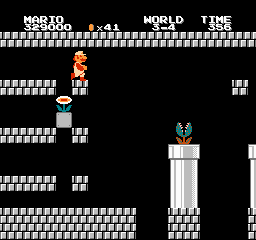 | |
| Level code | World 3-4 |
| World | World 3 |
| Game | Super Mario Bros.: The Lost Levels |
| Time limit | 400 seconds |
| Boss | Fake Bowser (Buzzy Beetle) |
| Directory of levels >> | |
World 3-4 is the fourth and final level of World 3 in Super Mario Bros.: The Lost Levels and the twelfth level overall in said game, taking place in a castle.
Contents
Layout [ edit ]
The layout of this level is a maze, and the player has to go through the correct path in order to progress. If the player chose the incorrect path, they will have to repeat the same area until they choose the correct one.
After the second lava pit, the player needs to take the path on the bottom, avoiding a third lava pit, and jump over the pipe with a Piranha Plant. The next path is the one on the bottom, though the player can only legitimately move through it if they are in a small form; if they are not in small form, they can get hit by the previous Piranha Plant. A Lava Bubble also jumps up from the pit ahead, and the player can find a Hidden Block with a power-up between the second array of gaps in the platforms.
The path can also be traversed as Super or Fire Mario through a series of well-timed crouches. In Super Mario Bros. Deluxe, the path above it is also correct, eliminating the problem altogether.
For the second puzzle, the player needs to jump over the two pipes with Piranha Plants and find four Hidden Blocks on the lower path afterward, or use the first pipe to reach the upper platform. Using these blocks as a platform, the player can reach the upper paths which they must remain on, avoiding the Fire Bars ahead. Afterward is the Fake Bowser with a Lava Bubble jumping up from below.
Super Mario Bros
About Super Mario Bros
Super Mario Bros
Let’s play Super Mario Bros to save Mushroom Princess right now. The Mushroom Princess is being held captive by the evil Koopa tribe of turtles.
Eating a mushroom changes ordinary Mario into Super Mario, doubling his size and granting him the power to destroy bricks above him. However, if he is struck while in this state, he will return to his normal self, but he will not die. Eating a Fire Flower transforms Mario into Fire Mario, who can launch bouncing fireballs from his hands. Touching a bouncing Super Star (which also provides a power-up chance) transforms him into Star Mario.
Star Mario
In his Star Mario form, nearly nothing can injure him, and he can also kill adversaries with a single touch. This ability does not last long, therefore utilize it as soon as possible. Players begin with a certain number of lives, which are depleted if they suffer damage, run out of time, or fall into a bottomless pit.
The Battle
Jumping on foes is often the only method to defeat them, and each enemy reacts differently. Koopas are turtle-like animals that withdraw inside their shells when threatened. Buzzy Beetles will convert into shells when Goombas flatten and are vanquished. Most opponents can be destroyed with fire, and you will be rewarded with cash as a result. The game is divided into worlds, and the last level of each one is always set in a castle, where Mario is intended to face Bowser atop a suspension bridge.
How to play
How to save the Mushroom Princess?
Are you looking for more games like this? Check out our online skill games, such as geometry dash. Enjoy!
Super Mario Advance 4: Super Mario Bros. 3
Developer: Nintendo R&D2
Publisher: Nintendo
Platform: Game Boy Advance
Released in JP: July 11, 2003
Released in US: October 21, 2003
Released in EU: October 17, 2003
Released in AU: February 23, 2004
Super Mario Advance 4: Super Mario Bros. 3 is a port of the SNES version of Super Mario Bros. 3, making this a port of a port.
The biggest addition to this game is World-e, a hub where you can access new levels. provided you have an e-Reader and the appropriate level cards. There were 38 level cards released in Japan, North America and Australia only got 12 before the e-Reader was discontinued, and Europe didn’t get anything. You’re welcome, Europe!
At least all of the World-e levels were included in the 2016 Virtual Console re-release. (Yes, including Europe and the three promotional levels!)
Содержание
Sub-Pages
Main Game
Stuff from the main game. Natch.
Unused Graphics
Mainly consists of unused graphics from the SNES version, which contains unused graphics from the NES original. Clean up your tilesets, Nintendo!
General

The unused animations of map Mario walking left/right and up have been updated again for Super Mario Advance 4, adding gloves to Mario’s sprite.
Gloves were also added to the Hammer Suit sliding graphic.
Unused victory graphics for Mario and Luigi.
These bonus tiles still aren’t used. While there were three bonus games added to Super Mario Advance 4, none of them are the ones removed from the original game.
| Super Mario Bros. 3 | Super Mario All-Stars/Super Mario Advance 4 |
|---|---|
 |  |
The original Spiny Cheep-Cheep graphics are still in the ROM. Seriously.
The same four end-of-level outlines that went unused in Super Mario All-Stars are present here.


The bonus game intros were redone for this version, so these old Toad/Mario/Luigi graphics are no longer needed. Interestingly, the gloves on the small forms were not updated.
Plains

The updated eye clouds and double bushes are still present.
Grasslands

Updated big and small clouds. Mmmhmm.
The corner pieces that aren’t used in the NES version are still present, and still in their 4-color format.
Higher Plains
Spiral clouds and the original hill designs.
Caves
Updated small cloud, but it isn’t used. Ever.
The unused cloud corner tiles are present as well, unconverted.
Desert
A piece of foreground scenery? Let’s update it, but not use it.
The multitude of unused desert tiles in the NES version still linger, unchanged in the tileset. Again.
The unused cloud corner tiles remain in the tileset.
There was a big cloud here. It’s gone now.
Castle
This weird door frame or whatever it is was never deleted when the tileset was ported over. Twice.
World 8


The updated tire, spikes, and propeller from the SNES version.
Super Mario Advance 2 Leftovers

These graphics from Super Mario World: Super Mario Advance 2 are stored in one block of the ROM. Unlike most of these graphics, these tiles are uncompressed, so they were not likely intended for World-e.
This font is found in the same block, with what appears to be a string for the game version.
Unused Enemies
A yellow version of the Cheep-Cheep enemy. They swim faster than normal Cheep-Cheeps, in a wave-like motion.
A faster green version of the Para-Beetle enemy, which can only be generated by the also-unused Para-Beetle spawner.
Unused sprites of the flying/winged Boom-Boom in the defensive position. In the final game, Boom-Boom continues flying around until jumped on, so these go unused. They are also present in Super Mario All-Stars.
World-e
World-e has more unused content than the entire main game!
Sub-Pages
Unused Backgrounds
Bonus Game
Background ID: 33
This background uses graphics found nowhere else in the game. Its ID is directly after the three new bonus game backgrounds, hinting that it might have been a possible candidate for a bonus game. It looks very similar to a texture seen in Shy Guy’s Toybox from Paper Mario.
Caves
Background ID: 34
The standard cave background, with a second cave layer in place of a skyline.
Hills
Background ID: 36
The hills background (seen in grassland levels) at a higher elevation.
Waterfalls
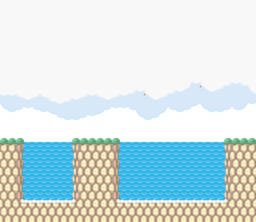

Unused Level Icons
These World-e level icons are unused, mainly icons already used in the main game.
Boomerang Brother
(ID #1A)
Sledge Brother
(ID #1B)
Fire Brother
(ID #1C)
Unused Level Sets
Three level sets are unused: lowercase e ( 00 ), Fire Flower ( 03 ), and Heart ( 04 ). There are three sets used for the released levels: Mushroom, Star, and Promotional.
Unused Switch Details
Grey Switch

A grey palette exists for the e-Switches, present in both the e-Reader room and the World-e map.
Switch Cards
These are stored in the ROM and should be displayed on the e-Reader screen when an e-Switch card is scanned, but this never happens. It’s too bad, as these are some nice graphics.
Similar graphics are found on the World-e map.
Unused Switch Content
4000 Points Switch
No card image found
Switch ID: 0020
With this effect, the continuous enemy point bonus will start at 4000 instead of 100. This means that the player will start earning extra lives with the third enemy in a row.
1-Up Mushroom Switch
Switch ID: 0004
With this switch active, all blocks that contain 1-Up Mushrooms will give three of them instead of one.
Floating Platform Switch
This switch will enable a cool feature when you fall down a pit: the first two times the player falls down in a stage, they will be raised out of the pit by a floating platform. The first time it will be two blocks wide (much like the similar winged platforms of Super Mario World), and the second time it will be only one block. Jumping down a pit a third time will result in death.
Hold Box Switch
No card image found
Switch ID: 0008
This switch effect will add a hold item box to the center of the screen, again like Super Mario World. Once you get hit, the item will drop down and a new one will be added. The item box will always be a Mushroom at the start of the stage.
The item can be any one of the following: Mushroom, Fire Flower, Raccoon Leaf, Frog Suit, Tanooki Suit, Hammer Suit.
Luigi Demo Switch
No card image found
Switch ID: 4000
Any demo recorded with this switch active will have Mario replaced with Luigi when played back. If used during the main game in conjunction with the Luigi gameplay switch ( 4100 ), or during World-e, this will usually lead to Luigi dying.
A quasi-similar idea would be used in New Super Mario Bros. Wii as «Super Guide», where Luigi can play a level for you if you die enough times.
Miscellaneous
European World-e
World-e is disabled by default in the European version, but not actually removed, and was even translated into other languages. It can be unlocked by exploiting a corrupted save.
Europe eventually got World-e when Super Mario Advance 4 was released on Virtual Console on March 10, 2016, and the language translations are thus used in that version.
Alternate Bonus Icons
Older graphics for the e-Coin and Advance Coin counters are loaded before the new ones take their place.
Advance Coin Graphics
Two unused frames of the Advance Coin flipping. The text here translates as «rare», which could be the meaning of the R icon. The coin only has three frames of animation in-game, making it look rather awkward.
Diggin’ Chuck Graphics
The loaded tiles for the Chargin’ Chucks contains some graphics from Diggin’ Chuck’s Super Mario World sprite. Possibly a leftover as none of Diggin’ Chuck’s other tiles nor it’s rocks are loaded with it.
Hard Block Graphic
An unused sprite for the Super Mario Bros. variant of the Hard Block, taken almost directly from Super Mario All-Stars. The final game uses a modified version of the sprite.
Castle Floors
The castle that houses the e-Coins actually has three floors, but the latter two are never accessible.

The upper floors are unlocked when an e-Reader level is marked to have a 9th and 17th e-Coin, respectively, and allows you to move up or down a floor by pressing L and R respectively. Since even in the Japanese version only eight e-Coins got released, these floors are never accessible.
Placeholder Text
A little block of katakana text that’s stored in memory for a couple of frames before the level loads. マント translates as «cloak», and marks where the Cape graphics are stored.
Other Unused Text
«Trap replacement». This chunk of text is loaded for the bonus game intros.
Japanese text translating to «Will you save this course?»
Japanese text «R» menu: «tsuushin» = Communication; «touroku» = Register; «sakujo» = Remove.
Build Dates
| Version | Offset | Text |
|---|---|---|
| Japan | 002637D4 | |
| US | 002630AC | |
| Japan (Rev 1) | 0026327C | |
| Europe | 003084A8 | |
| Japan (Rev 2) & JP (Virtual Console) | 00263908 | |
| US, Australia (Rev 1) & US (Virtual Console) | 00263C78 | |
| Europe (Rev 1) | 00308AA4 |
Regional Differences
Title Screen
Super Mario Advance 4 continues the habit of giving the international title screens a massive downgrade in quality. Also, the Japanese version has the «Single Player» and «Multiplayer» options in the top-left corner like the previous three games, while international versions move them down to the bottom.
e-Reader Support
Wii U Virtual Console Changes
The game was rereleased for the Wii U Virtual Console in 2016.
World-e
This version contains all 38 e-Reader levels built into the game, including the 26 that never left Japan. This normally isn’t even possible with the original GBA version, as it’s only capable of storing 32 levels at a time.
Игра Super Mario Bros 2
Во второй части игры о Марио и его братьях (от сокращ. английского bros – братья) злобный дракон в очередной раз крадет принцессу Пич, и Марио, и его братьям не остается ничего другого, кроме как отправляться на ее поиски и спасение. Технически игра позволяет управлять не только Марио или его братом Луиджи, но и самой принцессой Пич и Тодом, например. Также добавлена шкала жизни. В начале игры – это всего 2 пункта, но их можно увеличить до четырех. Кроме того, система боя изменена в положительную сторону.
Как играть?
Чего только не делали Марио и его братья ради принцессы Пич, и сегодня им предстоит в очередной раз спасти симпатичную наследницу престола. Ее украл дракон, который не хочет, чтобы умная и смазливая красотка правила виртуальным королевством. Марио, Луиджи и Тод отправляются в опасный путь, чтобы освободить прекрасную пленницу. Обязательно увеличьте шкалу жизни с двух до четырех пунктов в ходе игры, потому что в ходе многочисленных сражений жизней на всех героев может не хватить. Если раньше на героев можно было просто напрыгивать, а теперь их можно хватать и кидать на других монстров. Вообще, во 2-й части эпилоги о Марио и его верных братьях кидаться в противников можно, чем угодно! Осваивайте несложное управление и спасайте красавицу Пич!
Игра Super Mario Bros 3
Маленькому и смешному толстячку в красном придется в этой классической игре из серии игр о Марио спасти семь королевств и победить хитрого и коварного Боузера. Геймплей, графика и сюжет игры достаточно просты, но количество припасенных создателями секретов, бонусов и подарков с лихвой компенсирует это все и даже больше. Кроме того, в этой версии очень много различных форм, в которые с легкостью можно перевоплощаться Марио и его братьям. Это не просто усатый толстяк, а супергерой с огромным арсеналом супероружия и не только. Для начала можно спасти из замка прекрасную принцессу!
Как играть?
Семь королевств предстоит спасти Марио и его братьям в этой игре, и это будет довольно непросто! Для начала Марио нужно спасти красивую королевишну из замка, из которого раздаются ее жалобные крики: «Спасите!». Ее охраняет огромный коричневый здоровяк с дубиной! Дорожки в королевствах тщательно размечены, везде растут кустарники, и все выглядит красиво. В игре много форм, которые можно принимать. Можно также собирать полезные предметы, с помощью которых трудные места проходить на порядок легче. Имеется тут и великое множество всевозможных бонусов, головоломок и не только! Так что присоединяйтесь к команде любителей игр о Марио и побеждайте злобного Боузера!
Super Mario Bros.
Embed Super Mario Bros.
Super Mario All Stars
Super Mario 64: Multiplayer
Friday Night Funkin’ vs Indie Cross
Friday Night Funkin’
Super Mario World Online
Super Mario World Online
Super Mario Bros 2
Super Mario Crossover
Super Mario All Stars
Super Demo World: The Legend Continues
Super Mario Omega
Super Bunny World
Super Mario Bros: Enhanced
Old M Delux Edition
How to play Super Mario Bros.?
How to play Super Mario Bros?
This classic video game has very simple controls that nevertheless offer great gameplay. Use the directional pad on your keyboard to move Mario or make him crouch. Use the Z button to jump by pressing a direction on the arrow pad to direct the jump. Use the X button to make Mario run around the stage, which will help you escape from enemies and make longer jumps. You’ll find «power ups» around the stage that will make Mario more powerful. The red mushroom will make him grow. The flower will give him the power to throw fireballs. The green mushroom will give him an extra life. Use them wisely and defeat all the enemies you encounter.
Want tips on how to be the best in Super Mario Bros?
There are a few shortcuts in Super Mario Bros that will allow you to skip some of the more dangerous worlds and quickly advance through the adventure. To go to worlds 2, 3 or 4 from 1-2, go to the area with the platforms that go up and down and try to reach the top of the level. If you continue walking you will reach an area of pipes where you can choose which world to go to. From world 4-2 you can go to world 6, 7 and 8. You will need to find two invisible blocks in between two pipes with the Koopa Troop between them. Climb back up to the roof and you’ll find other pipes that will take you to other worlds.
Who created the original Super Mario Bros?
The original Super Mario Bros. was created by the famous Shigeru Miyamoto in September 1985, produced by the company Nintendo, for the NES (Nintendo Entertainment System) platform. This game was the one that popularized the character of Mario and catapulted him to fame, being one of the most recognized characters in the history of video games until today.
Источники:
- http://www.mariowiki.com/World_4-4_(Super_Mario_Bros.)
- http://www.mariowiki.com/World_4_(New_Super_Mario_Bros._2)
- http://www.mariowiki.com/World_8-4_(Super_Mario_Bros.)
- http://www.mariowiki.com/World_7-4_(Super_Mario_Bros.)
- http://www.mariowiki.com/World_4-2_(Super_Mario_Bros.)
- http://www.mariowiki.com/Super_Mario_Advance_4:_Super_Mario_Bros._3
- http://igroutka.ru/mario/
- http://www.mariowiki.com/World_4-4_(New_Super_Mario_Bros.)
- http://vseigru.net/igry-mario/30677-igra-mir-mario-bros.html
- http://habr.com/ru/company/wd/blog/522804/
- http://portforward.com/games/walkthroughs/Super-Mario-Bros/World-4.htm
- http://www.mariowiki.com/World_8-4_(Super_Mario_Bros.:_The_Lost_Levels)
- http://www.mariowiki.com/World_6-4_(Super_Mario_Bros.:_The_Lost_Levels)
- http://www.mariowiki.com/Super_Mario_Bros.
- http://igroutka.ru/mario/44971-mario-protiv-luidzhi.html
- http://dendy.club/dendy/1867-super-mario-bros.html
- http://4gameground.ru/tag/mariobros/
- http://www.mariowiki.com/World_3-4_(Super_Mario_Bros.:_The_Lost_Levels)
- http://supermariobros.io/
- http://tcrf.net/Super_Mario_Advance_4:_Super_Mario_Bros._3
- http://igroutka.ru/mario/21486-super-mario-bros-2.html
- http://igroutka.ru/mario/21487-super-mario-bros-3.html
- http://www.miniplay.com/game/super-mario-bros
